#as if i expect every Western film to be well-written ha
Explore tagged Tumblr posts
Text
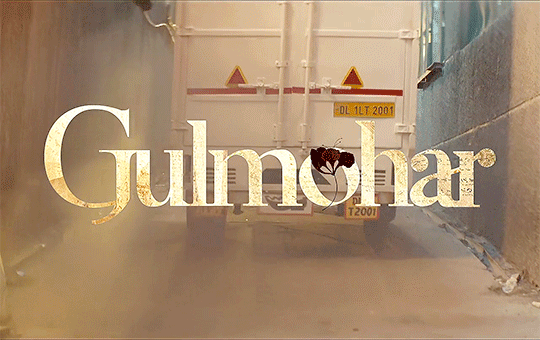
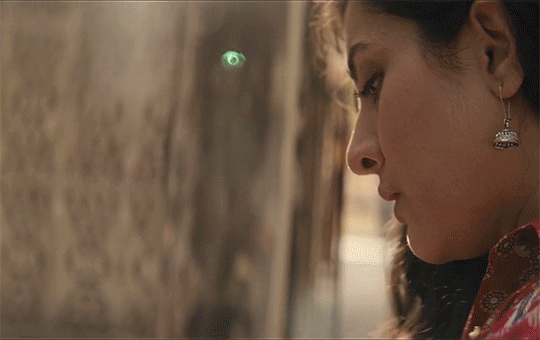
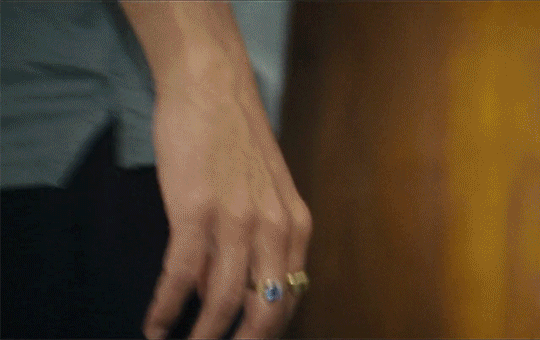
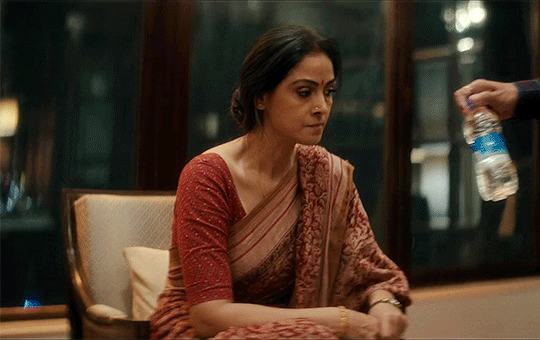

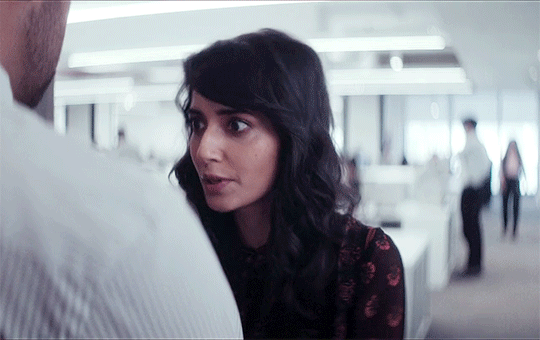
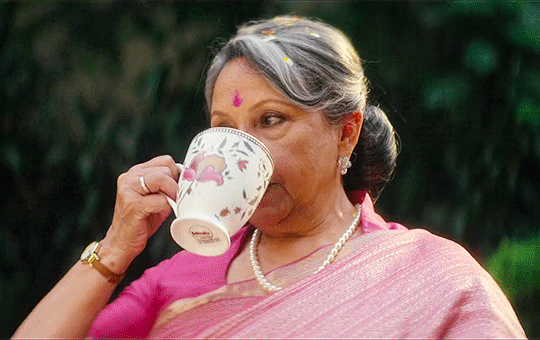
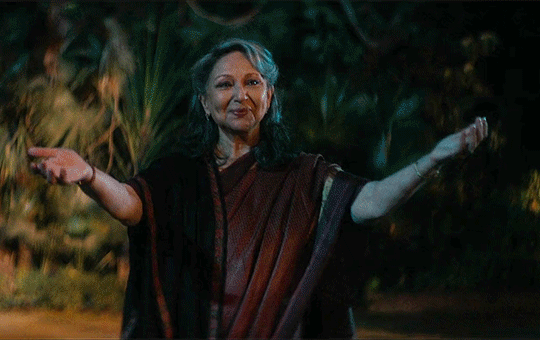
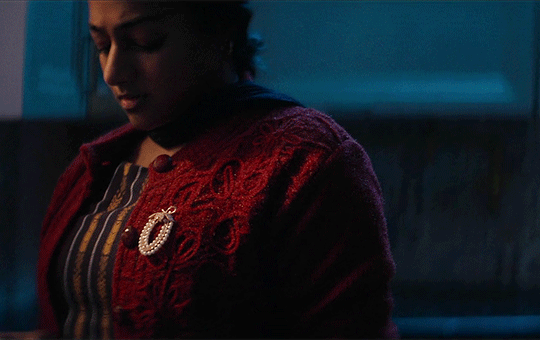
Every Film I Watch In 2023:
185. Gulmohar (2023)
#gulmohar#gulmohar (2023)#2023filmgifs#my gifs#that was so good holy shit#the script was so cohesive#with the motifs of boxes and rooms and secrets and scattered mess#i was like 'what the hell why isn't every desi film this well written'#as if i expect every Western film to be well-written ha#we always judge our own worst#and yes the first half of this was damn near triggering#esp with the nagging and the criticism#i almost had flashbacks ugh#but then my god the vulnerability#the devastating secrets#oof my heart#and yes i fully teared up at the end#also really beautifully shot#with the sunlight#and the rich colours#such an excellent cast#all of them were so good#which means it was excellent direction#also fuck yeah to Bollywood screen divas playing secret lesbians onscreen#i am HERE for this trend#queer film#queer desi film#even
23 notes
·
View notes
Note
Industry question for you, please: Why is it that it seems that Thai BL in particular has some really systemic issues with writing endings? Screwed-up pacing/editing, out-of-character/illogical actions, not being very satisfying... it seems like a show avoiding that fate is more of an exception than the rule, unfortunately. Do a lot of them just... not write the ending ahead of time? 😅 That would make having these sort of wacked-up endings at least make some sense, but... really, it makes *no* sense to me that that would be the actual standard writing strategy-- I mean, for example, one of the best living novel authors I know of *always* has very satisfying endings, literally without fail (I have read everything he's written and been perfectly content with the ending of every one), and the reason for that is he purposefully always writes the endings of his books *first*, then works everything back up to that point. Similarly, some of the best TV shows I've seen (from any country-- and this does actually include some Thai ones, to be fair) were written either all in one go or at the *very* least with their endings obviously already very firmly in mind, regardless of if they were completely original or were adaptations of some other source material. So... why does this often seem to be such a difficulty for the writers of Thai BL? 😅 (Sorry if I sound a little salty here, but endings either make or break all fiction for me {novels, manga/manhwa, TV, movies, games, whatever}, and I've been getting burned what seems to be more and more often lately with shows being great for the vast majority of their runtime but then inexplicably totally botching the landing, seemingly out of nowhere-- so I'm a bit frustrated with that when it seems to be a really simply-solved problem {that, indeed, has already been solved by many others before}: JUST WRITE THE DAMN ENDING *FIRST* and then work up to it? 🙃😅)
Endings huh? You a romance reader by nature? (Wait, no, you said... HE. So... Sparks? Green?) Anygay, where was I?
But yeah, I get it. I've always fancied the dessert course the most, myself.
To answer your question, not sure. I'm assuming its a narrative expectation based in culture. Like Japan and their lanes, China and 6 act structure, or Korea's adoration of love triangles. And producing culture comes to film and storytelling with its own set narrative conceits, archetypes, and tropes and aren't proscriptive but are leaned on a lot. Much as they come to film with a certain style as well.

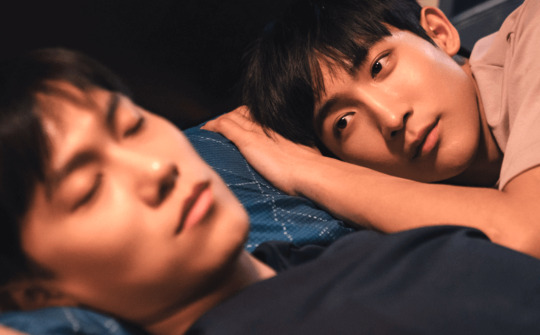
Think about the "look" of Korean BL compared to the "look" of Taiwanese BL, for example. They have an entirely different flavor to them. Korean stuff is usually all bright and airy, lots of distance shots, super clean and uncluttered, filtered and filmy and atmospheric. Taiwanese stuff is much closer, more grainy, more bold with it's color choices and contrasts, kind-up n your face and gritty, a bit messy sometimes.
It's jarring to go from one to the other.
After watching nothing but Asian dramas for so long, I always find it jarring to go back to American shit. It feels over-acted and unsubtle and kind of brash. Over all "loud" and in my face. Jarring.
So when first encountering 4 or 6 act structure most westerners feel a little unmoored, it doesn't feel comfortable until you sink into it and leave 3 & 5 behind.
I'm mean I'm so used to K-dramas with that arbitrary year or more separation in the final episode I;m now shocked when it's not there.
I guess what I'm saying is maybe it's just a thing with Thailand, not to put that much truck in endings. The way (especially) romances do in the western world. There's a very fixed idea of what an HEA should look like in the west. Thailand may not share that idea.
I've not read the source books of any of these BLs, so I don't know if this is just their narrative style or not.
I mean there are some Thai BLs with good (if not great) endings, and plenty of Korean BLs with terrible middles, and far too many Taiwanese BLs with bad beginnings.
Ya just kinda get used to it, I guess.
15 Thai BLs with Good Endings
A Tale of Thousand Stars
Bad Buddy
Lovely Writer
2gether
Be My Favorite
Dark Blue Kiss (possibly my favorite on this list)
Destiny Seeker
Make a Wish
Naughty Babe
SOTUS
#asked and answered#sort of#stories represent culture#it;s the whole point#actually#thai bl#bad endings
50 notes
·
View notes
Text
the MCU's rhetoric about political resistance/change is often so insidious. the only time we see people who want to change the status quo, theyre destructive and often incapable of feeling compassion for anyone outside of the group theyre fighting for. so the only two options are siding with the cruel antagonist who wants real change and the heroes who will make small concessions so that the audience feels good but ultimately they uphold the harmful status quo. I'm not saying this doesn't happen in real life, but when a trope pretty much becomes the default, you start to see the writer's political messages coming out. ESPECIALLY when the primary threat comes from exploited working class people/oppressed minorities and not the colonialist powers and corporations that put them in that position.
sidenote: when i watched black panther 2 and realized that the primary conflict was going to be black people fighting indigenous people and that western hegemony and exploitation of resources was just a side plot, I immediately lost all hope for that film. I loved the music, the visuals and the fight scenes, but the writing?? i was so disappointed. All the dissatisfaction I felt from Black Panther 1 came flooding back. Before they were pitting us against each other, this time it was against another oppressed group...hhhhhhh. anyway jokes on me for expecting different. I really just need to read The Deep (and if its anything like the song its based on, its probably much better executed than wakanda forever).
anyway, yes, the audience has the freedom to see things with nuance but i dont think most people will (because "its just a fun superhero move, why are you taking it so seriously?"), and I dont think the writers want them to - otherwise they'd start including more nuanced characters rather than villains who we are shown have to be defeated for the greater good, no matter how valid their arguments may be. and I understand that the vast majority of people are not watching superhero movies looking for nuance and depth but thats all the more reason why so much of the MCU's writing is concerning. Every time we're faced with a troubling political/ecological debate, the conclusion is that whoever tried to change things was in the wrong, and we'll make a small concession at the end so everyone feels somewhat satisfied and doesn't really have to confront any uncomfortable implications.
ex: infinity war shows us Thanos' eco fascism as the main (and only?) criticism of the overconsumption of resources. I may be wrong but I don't remember anyone talking about sustainability as vital solution or anything...and in FATWS the conversation is STILL about the pros and cons of the Snap - not anything to do with sustainability...because that would require the audience to be confronted with real life political implications that are bit too close to home. Even to have one or a few characters suggest an alternative and for Thanos to shoot it down because he doesn't trust people to be sustainable, and because he truly thinks killing people is the best possible plan (which makes no sense btw because it implies that all species are overpopulated at the same and that every single species in the universe consumes resources in the same way..they made movie!Thanos *seem* so intelligent but his thought process literally makes no sense. and fans bend over backwards to justify it because "hes the mad titan" even though you clearly cant use that defense based on the way he's written in the film. The writers clearly want us to see him as rational but cruel...anyway its not 2018 so let me stop beating the dead horse of this tired topic)
basically, theres rarely (if ever) a middle between the two extremes, because theres no room for that. There has to be a good guy and a bad guy...perhaps a well intentioned and misguided bad guy, but ultimately still a bad guy. The options are: pretty much nothing but minor things change and the problem still exists OR everything changes but it would require the violent villain getting their way and killing innocent people in the process.
anyway thank god for the spiderverse , which actually does the opposite (and thank god spiderverse is not directly part of the MCU and the writers actually have something to say). I think the loki show may be doing something similar but im not caught up so idk. loki to me feels like spiderverse but with less narrative cohesion
#mcu criticism#marvel criticism#say what you will about the boys but at least it has a message thats not half as wishy washy as the mcu
12 notes
·
View notes
Text
'I’ve been going about my life comfortably believing that Spider-Man: Across the Spiderverse would be the best western movie of the decade. And then came Oppenheimer.
After sitting on it for a while, I’m honestly still debating which was the best watch of the year so far, but regardless, managing to be on the same level as a Spider-verse movie (especially with an animation fan like me) is a feat of its own. Going into this movie completely and utterly blind, I absolutely loved it. I genuinely, wholeheartedly believe that it’s cemented itself as one of my favourite movies of all time. I know that’s a big claim, but trust me, Oppenheimer is worth it.
Since its premiere, most of the internet is already aware that Christopher Nolan’s latest film is a (mostly accurate) biographical retelling of the life of J Robert Oppenheimer, “the father of the atomic bomb.” Or, after watching the movie, I suppose American Prometheus is a better title.
At heart, that is how Nolan, adapting from Kai Bird and Martin J Sherwin’s book American Prometheus, portrays Oppenheimer; a man who gave humans the ‘gift’ of destruction and was tortured for eternity because of it. Instead of being chained to a rock and having his liver eaten daily like his greek counterpart, Dr Oppenheimer’s torture is a lot more internal and self-inflicted, if you will. And I imagine a thousand times more painful.
There are numerous themes within the story, as every good movie should have, but its soul is Oppenheimer’s own turmoil after creating the atomic bomb. Portrayed beautifully through Nolan’s writing and directing and acted out incredibly by Cillian Murphy, this was some of the best writing cinema has seen since, well, I would say years, but Spider-verse came out in June.
It was one of the best internal struggles I’ve seen in a long time. Keep in mind that although Oppenheimer’s turmoil mainly all leads back to guilt, it is also layered with the struggle we see between guilt, the damage he’s done by constructing a bomb that could destroy humanity, and the pride he has in serving his country and saving all the lives he did by ending the war early. Although short-lived, the struggle is there and it’s important. Even when barely feeling pride, his guilt increases and sends him down a spiral, trapped in his own mind. And with a mind as great as J Robert Oppenheimer’s, that’s a dangerous place to be.
This internal conflict was portrayed sincerely, authentically and subtly, with nuance and many different sides. Whether seeing him deal with it through denial, self-loathing, regret, desensitisation, morality or by openly disagreeing with the furthering of the arms race (cough Hydrogen Bomb cough) and also struggling with his feelings of pride, it was all done and written beautifully. I cannot say anymore without spoilers, but I’m sure you don’t need evidence; it’s Christopher Nolan, what would you expect?
However, if Oppenheimer’s turmoil was the soul of the story, then the frankly underrated and unmentioned theme of curiosity is the heart. Portraying the construction of the atomic bomb from the perspectives of the scientists that built it was a genius move, one that’s never been done before.
They just wanted to know. Which scientist would pass up the opportunity of doing the impossible? Of proving that they were the ones able to break all previously established rules? For a significant portion of the movie, that’s what the construction of the bomb was viewed with — curiosity, wonder and a challenge. These genius minds were simply and sincerely curious. And curiosity killed the cat. The sudden drop from that whimsy is one of the most effective thematic and tonal portrayals I’ve ever witnessed, both on and off screen.
It is widely known that the atomic bomb testing was successful, so it wouldn’t be a spoiler to mention that during its portrayal on screen, a few guys in the cinema started clapping. Gradually, a large chunk of the audience joined them, caught up in the moment. And, just a few scenes later, that exact thing is picked apart on screen in a tremendously directed and written scene — what exactly are we clapping for? The intentions were good, sure — they were celebrating the achievement of the impossible, in awe just like the scientists were. But it’s still the atomic bomb, the destroyer of worlds. This exact feeling was portrayed by Oppenheimer on screen and the way Nolan masterfully crafted it to fit with the audience and for the audience to relate to him on such a level, even if only for a scene, whether intentional or not, is the work of a master craftsman. To get the audience to feel shame.
Just like Oppenheimer.
Apart from him, the character of his wife, Emily Blunt’s Kitty, is also extremely well done, especially in the latter half of the film. She is the brawn to his brains, the fighter to his martyr, the (surprisingly) sturdy, albeit chaotic, anchor while he’s getting lost in a sea of his turmoil, and, simply, his wife. Yet, despite being a counterpart to ‘his’ everything, she is so distinctly and clearly her own. An incredibly written character, and although I can’t say I was very fond of her in the beginning, by the end of the film I almost had more respect for her than I did for her husband. Now, they sit equally high in my heart, as they do in the movie.
Other acting highlights were Matt Damon’s General Groves, Florence Pugh’s Jean Tatlock and Robert Downey Jr’s Lewis Strauss, as well as Tom Conti’s Einstein — his portrayal was surprisingly endearing. The themes of loyalty and betrayal are also worth mentioning, and how, contrary to the recent American imperialism trend present in most Hollywood movies, it’s actually both portrayed and, in my opinion, mocked. However, the most glaring point we haven’t discussed yet is Nolan’s masterful directing.
As a writer, I’ve discussed his genius enough, but as a director, no analysis or praise would ever be enough, so I won’t even try. Embracing his fragmented storyline techniques once again, the timeline is scattered, creating a wonderful sense of suspense, mystery and that there’s always more to the story. While some scenes are portrayed in a hard, black and white ‘factual’ lens, Oppenheimer’s own extraordinary life being played out in colour was not just symbolic but also helpful in differentiating between the narrative back-and-forth. The unexpected jumps and jolts of stars, space and atoms depending on what Oppenheimer’s mind was crafting or dissecting, added to both the chaotic and calm scenes. Either way, writer or director, Nolan is a true master of storytelling. Composer Ludwig Göransson’s masterful touch added to the scenes just that much more.
In conclusion, and honesty, I prefer to sit on a story for quite a while before grabbing my notebook and picking it apart, but with Oppenheimer, I could neither analyse without spoiling it nor wait to discuss it, so this review is a compromise. My only concern is that I won’t be able to do this gem of a movie justice so please, if you take anything away from this, let it be to watch Oppenheimer yourself. It’s the kind of movie I believe everyone needs to see.'
#Christopher Nolan#Oppenheimer#Ludwig Goransson#American Prometheus#Kai Bird#Martin J. Sherwin#Cillian Murphy#Tom Conti#Einstein#Florence Pugh#Jean Tatlock#Robert Downey Jr.#Lewis Strauss#Matt Damon#Leslie Groves#Emily Blunt#Kitty
2 notes
·
View notes
Text
geeking out about 3D anime
okay I *need* to talk to you about the anime movie BLAME! (2017). I didn’t expect it, but I immensly enjoyed the movie.
But let’s start at the beginning. I’ve read the manga back in the aughts, and even next to other popular cyberpunk/dystopian/dark manga, BLAME was so *different*.
Barely any words written on the pages, filled with immensly detailed drawings of megastructures that trap the sparse people inside; no horizon is visible, just structures over structures all around, piling up so high, neither ground nor sky are visible. Killy is a lone wanderer, ascending the structure-- A human being as detached from nature as can be.
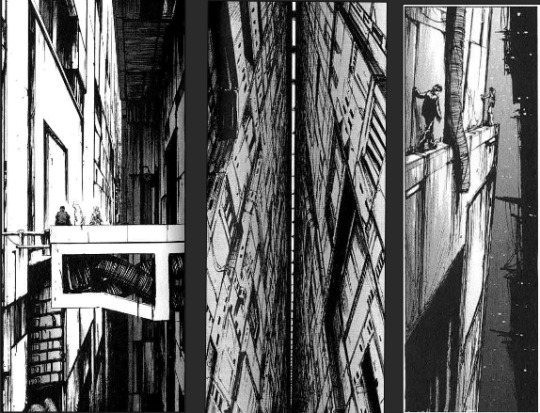
later I learned how this unique look came to be; manga artist Tsutomu Nihei, and creator of BLAME, had been a student of architecture before he became a manga artist.
Accordingly, many of the panels were architectural in nature; they were “ma”, as panels without words are called, or “aida” which means “inbetween”. It’s a style of panel that isn’t common in western comic traditions, but is widely used in the Japanese way of storytelling: scenes that set the ‘vibe’, so to speak, let an emotion linger.
Not all panels shine like the ones above; you could tell the young mangaka was struggling with action scenes, which are plentiful, and especially faces. Both showed the effort with which they were brought into existence.

The action scenes sometimes are stiff, the faces skewed. They didn’t come easy to Tsutomu Nihei, although he immensly improved on that within the span of the 10 volumes BLAME ran. With time, however, I became fond of this peculiarity.
The world of BLAME is cruel and lonely; rarely does the lone wanderer Killy meet other humans, and even then, the connection is usually only very brief, be it because they die, Killy leaves, or the human turns out to be a machine in disguise who is out to kill every human it encounters. Maybe I’m sugarcoating things that needn’t be, but it made total sense for me that depicting those sparse humans would demand visible effort from the artist.
You can maybe now imagine my.... surprise when I saw the character design of the movie in 2017
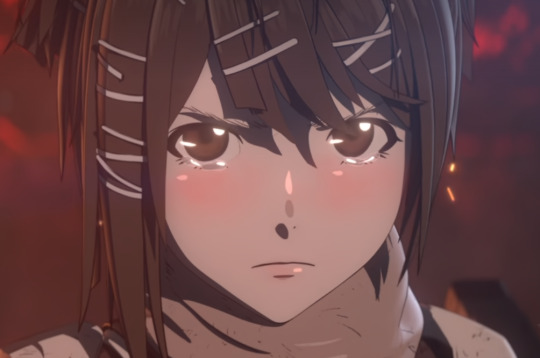
anime eyes! so round and smooth! To me, it betrayed the rough and rugged style of the manga, I felt like I could re-watch K-On instead if that’s the style they were trying to sell me. Also, the Berserk movies had already ruined 3D animes for me, and I didn’t want to watch anything that didn’t have hand drawn anime characters anymore. Oh how foolish of me. We get back to that.
So, what changed my mind about watching BLAME? Glad that you asked cuz I cannot and will not stop talking about BATMAN NINJA. Seriously tho, do yourself the favor and watch Batman Ninja if you want to see a movie that is exactly as unhinged as it claims to be, and poses the perfect marriage between traditional Japanese art styles and modern 3D animation. Batman, several Robins, and a whole lot villains get teleported to feudal Japan, what more can I say. Prepare for some stunning views and increasing madnESS THAT WILL NEVER STOP AAAHH. Honestly, it’s a blast. I rewatch it yearly.

pease notice the traditional wave pattern (seigaiha) in the sky, which you usually find on Japanese fabrics, as well as the dry ink stroke look in the shadows of the characters. Here is another look:

first, a seigaiha pattern in the sky; then, Batman in closeup to showcase the rough ink brush strokes for shadows; lastly, Batman in his full armor cuz it’s dope.
ANYWAY. Watch Batman Ninja, let’s get back to BLAME. So, my faith in 3D anime was restored. It still took me a while to watch the BLAME movie, but I can only recommend it. I will probably make a couple more posts to properly geek out about it, but it’s on Netflix, it has some gorgeous shots that made me want to pause the film and gawk at them, and despite the low frame rate at times, when it goes all in, it goes all in and has hands down some stunning animation.
I absolutely LOVE that they decided to make the backgrounds entirely hand painted. Most of the time the background has no 3D whatsoever, or if there’s some, it is so subtly hidden that I didn’t notice it.
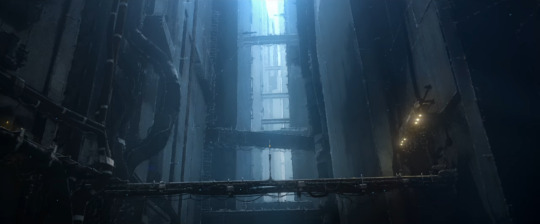

The 3D characters mostly blend well into the painted backgrounds, and I love the scratches on helmet and gear that are reminiscent of the rough ink drawings of the manga. Looking back, I cannot understand why I looked at the character designs and was disappointed. Scroll up and look at the face of the girl, she is a 3D model, no 2D. There are some gorgeous shots where you can’t tell that they’re 3D models at all, but I will keep those for a post where I’ll post spoilers. Can’t wait to get to that!
#blame!#blame! netflix#batman ninja#i know it's solely me who is populating the batman ninja tag; but i will if i have to#manga#anime#long post
18 notes
·
View notes
Text
Rating Versions of Harry Osborn: Updated
Wanted to redo this post with a more comprehensive and inclusive list of Harrys
616 Comics:

Just such a good and complex character. The OG Harry. His relationship with Peter just adds so much depth to every Green Goblin arc because of the inherent conflict of Peter knowing he needs to take down Norman Osborn, but not wanting to hurt or lose his best friend. (If you’ve read Kindred no you haven’t.) He’s still... ugly... I’m sorry 616 Harry... I love you so much but they did you dirty... Some artists do their best with what they have but... I’m not a big fan of western comic style in general so that doesn’t help. Has three failed marriages by the time he’s 30 because he’s gay and deeply closeted. 8/10
Spider-Man the Animated Series (1994):

The Harry plotline in this show reeeeally doesn’t feel earned, because the first time we see Harry having an active role in the show, he asks Peter to move in with him because Norman wants him to have a responsible studious roommate (a detail from the comics I was EXTREMELY excited to see play out), and Peter comments that they barely know each other. Ultimately they live together for all of one day before Peter decides to move back in with Aunt May. The next time we see Harry, MJ calls him Peter’s best friend, despite the fact that we haven’t seen Peter hanging out with—or even MENTIONING—Harry since the last episode when they were basically strangers. Really it feels like he’s just there to cause romantic drama as the guy MJ graciously settles for when she gives up on Peter. I found the whole goblin plotline kind of boring and lacking in depth. 3/10
Raimi Trilogy:

I was never interested in Raimi Harry until after I started liking and exploring other versions of Harry, because I just thought he was kinda a shit friend. He’s a pretty strong character overall, but his motivations aren’t as obvious. He’s torn between his love of Peter as his best friend, and his bitterness towards Peter for being the man his father wished he was. I don’t think Raimi Harry really wanted MJ, he just wanted to get back at Peter in a way by taking someone that HE loved. However I feel like his characterization kind of sways back and forth between sympathetic and not depending on how he’s written in the scene, and it disappoints me that the thing that gets him to stop tormenting Peter is the butler telling him out of nowhere that Norman died from his own blade, rather than any real character development on his part. 6/10
Spectacular Spider-Man:
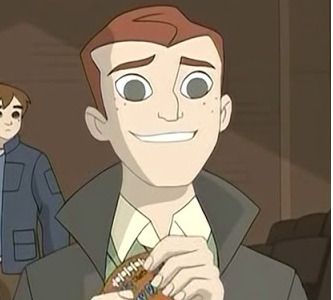
I still haven’t watched all of this show because I... can’t STAND this version of Peter... but I’ve watched many clips with this boy and he’s just... so sweet... He only wants to be loved and keeps getting his heart broken. Deserves better. On everything. He deserves a better father, a better best friend, better love interests, everything. I do really enjoy the way they incorporated 616 Harry’s drug abuse into this show with the Globulin Green, it was a very clever way to incorporate that aspect of his character, but tone it down for younger viewers. I’ve watched the scene of him getting “unmasked” as the Green Goblin about a million times it’s very good. 8/10
Ultimate Spider-Man:
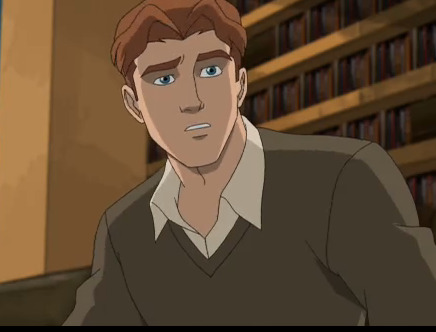
I love him. Most people fear drifting apart from those close to us, so watching Harry struggle with the new and increasing distance between him and Peter as Peter seemingly makes new, “better” friends is downright heartbreaking. Especially when he overhears Sam implying that Peter only hangs out with him for his money which is something he’s clearly experienced a lot. (Seriously Sam what the fuck.) I also love his struggle with Venom throughout the series as a metaphor for his anger and bitterness, it’s never truly gone even when they work hard to remove it. It’s always there to bubble back up under extreme amounts of stress, especially when Norman is involved. (Also this isn’t a Norman review, but USM Norman is the only version of Norman Osborn that has rights and he works hard to be the father Harry deserves.) Had an honest to God meet-cute with Peter like come on???? Its unfortunate how much they cut back Harry’s role in the third and fourth season, I really would have loved to see more of him. Threw a party specifically so he could ignore Peter to his face because he was jealous and I respect that level of pettiness. 9/10
Spider-Man: The New Animated Series
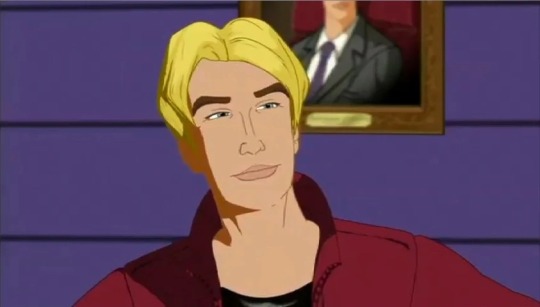
I didn’t think it was possible to create an uglier Harry than 90s Harry but this blonde, fuck-boy lookin creepass came and proved me wrong. Who the FUCK is this?? Doesn’t have any recognizable characteristics of Harry Osborn besides being rich and hating Spider-Man. Also just... look at him. I wouldn’t trust this man anywhere NEAR my drink at a party. #NotMySon -3/10
The Amazing Spider-Man:

He’s okay. I think he has some very emotional scenes and good chemistry with Peter, but it’s dampened by the fact that he wasn’t present in the first film and had to share the second with like two other main plot lines. Ultimately ends up being the least sympathetic version of Harry Osborn because he became the original Green Goblin and killed Gwen, rather than following in his father’s footsteps. That’s not to say he’s a completely unsympathetic character. He has a strong motivator in his fear of death, and I do think the choice they made for his character were interesting and could have developed really well, but they didn’t get the chance since the franchise was dropped. 5/10
PS4 Spider-Man:

ABSOLUTELY ADORE HIM. WISH WE GOT MORE OF HIM. HAVING YOUR EXPECTATIONS OF HARRY OSBORN BROKEN AS YOU SNEAK AROUND NORMAN’S PENTHOUSE AND LEARN THAT HE’S BEEN SECRETLY STRUGGLING WITH A GENETIC DISEASE HE’S BEEN HIDING FROM HIS BEST FRIENDS FOR YEARS WAS -chef’s kiss- GENIUS. PLEASE GIVE US A SECOND GAME WITH VENOM HARRY. 10/10
Marvel’s Spider-Man (2017):

Still easily my favorite version of Harry Osborn. When I first began watching the show I was startled by their decision to make Harry a science genius like Peter because it was so different from their usual dynamic, and many people who aren’t fans of the show point to this as something they dislike. But I actually ended up really loving the decision. It gives a different flavor to Harry in how he reacts to the events of the show and how we interpret his character traits, while still being very inherently Harry Osborn. Harry is jealous of Peter, he loves him dearly, but there’s always this ember of bitter envy ready to burst into anger whenever the plot creates friction between them. This is one of the defining traits of their relationship and in most versions it’s not hard to understand why. Peter has what Harry wants. He’s intelligent, he has potential, and most importantly he’s loved. Peter is the son Harry knows Norman wishes he had, and that creates a wedge between them. Marvel’s Spider-Man changes this dynamic. Harry can easily stand toe-to-toe with Peter in terms of intelligence, and in fact they often work together to create things or solutions Peter couldn’t have come up with on his own. That initial wedge between them isn’t there, creating a very endearing and loving friendship that we know is doomed to sour because it isn’t enough. MSM Harry could be the person Norman wants him to be, and that places the full weight of his father’s impossibly high expectations on his shoulders, always within reach but never quite achievable. So it makes a lot more sense why Peter initially has a low guard towards Norman (as opposed to some other series where Peter seems oddly dismissive of Harry’s justified complaints) and Harry’s own steadfast loyalty to his father. On the surface Norman seems like a perfectly loving parent, he encourages his son, he created an entire school for him when he was wrongfully accused of sabotage, it’s only when you start to dig deeper into their relationship that you see the subtle manipulations and the issues Harry has from constantly chasing his father’s approval. This creates a Harry who is desperate for validation and extremely sensitive to rejection, which colors his relationship with Peter throughout the show. I’m still mad he got nerfed in the second and third seasons because Disney is homophobic. TLDR: I may be biased ... Infinity/10
MCU:

Where is he? Who knows? Man missing in action. ?????/10
#Harry Osborn#spider-man#msm 2017#did i rant about various Harry Osborns way longer than I intended to? Yes yes I did#if anyone reads this tell me if i missed any prominent Harrys lmao#long post
116 notes
·
View notes
Note
being honest i dont get jm using a award to say he misses tannie... we don’t know 90% of their lives but they are very close to the point of still sleeping together sometimes. and going deep if they were really a couple jm woudnt miss taes dog right? and even as friends he could visit it. unless its because of their schedule right... this kind of comment sometimes confuses me and haters will use it as “they arent close” lol. i just wanted to know your pov.
Judging by Admin 2's reaction, as well as some others in our asks, I have a feeling I was the only one with a more realistic expectation, or lack of expectations, as I waited for the BTS profiles to be posted. Based on last year's, I knew expecting something grand out of Tae, and especially Jimin, would just be me setting myself up for failure, which is what I think happened here.
But, let's discuss it.
I spent a solid couple of hours making an excel table last night that contains everything every member said about every member (sourcing 3 translators for maximum insight) to see if really what Jimin chose for Tae is so "bad" that suddenly people are sending us asks like this one, and another one I'll add later down the line. And the conclusion I've come to is that...what he gave to Tae, as well as Hobi and Seokjin, as awards are the only ones that have any actual emotional/personal connection to them.

With Namjoon and JK Jimin basically states the obvious--Namjoon is tall and JK has gained muscle mass, meaning nothing new or with a proper emotional connection was stated; to Yoongi he made the same request many other members have made, so a work connection, nothing inherently personal.
Now, compared to that--Seokjin teases him/them, which isn't new info, so Jimin asked him to stop or do it less, a valid request which I'm sure he also voiced to Seokjin outside of this FESTA profile and also shows a degree of personal connection; Hobi gets requested to not walk away after asking Jimin a question, which again shows a personal connection and that it's a reoccurring thing; and lastly Tae with Tannie.
Something I've noticed is that some ARMY, who are used to our western celebrities and draw conclusions about idols based on those parameters, forget that BTS are busy, like whatever you consider busy, take that and multiply it by ten. During his vlive with Hobi and Yoongi back in April, Tae said that they are much busier and their lives far more hectic than any of us realize. Taking that into account, and the fact that one of the members (I think it might have been Seokjin) mentioned they work at least ten hours a day for 360 days a year with practice, MV and CF filming, photoshoots, interviews, recording and working on music, meetings, and many other things we have no idea about, do you really think Yeontan lives with Tae full time? A dog needs to get walked and fed but if Tae is out of the house every day for at least ten hours, what would happen to Tannie? He'd just sit around at home alone all day which just isn't fair, so I'm sure Tannie lives with Tae's parents much the same way Micky lives with Hobi's parents and/or his sister, JKs dog lives with his family, Holly lives with Yoongi’s brother, Moni with Namjoon's, and years ago Seokjin had to give his sugar gliders to his parents because he was too busy to take care of them.
Based on that of that, I'm not sure how often Tae get's to see Tannie. Probably not all that often, to be honest. So, if Tannie's owner doesn't get to see him often, I'd assume Jimin gets to see him even less (if we work on the assumption that Tannie lives with Tae's parents and thus Tae could only really see him when visiting them or when they visit him, that means Jimin wouldn't be able to see Tannie just like that either, since that would be like intruding on family time, right?). And we know Jimin loves Tannie, so him using that award to say he misses him and is asking about him shows care and an emotional connection to Tannie. Do I think Jimin also asks Tae privately about Tannie? Absolutely. And still, while Jimin didn't give Tae the, I don't know, "hot body Award" like Yoongi did with Namjoon or the "person I love most in the world award" (which we should know by now would never happen, and if you expected something of that intensity level, than I'm sorry but you've set yourself up for disappointment from the start), he still drew a personal and emotional connection between himself and Tae, as well as the pet Tae loves dearly.
More below the cut:
Jimin could’ve asked about the other pets of the members, but he didn’t, he only ever really talked about Tannie, and here he does it again, so doesn’t that show that he has a bond with him, a closer one than the other members since they don’t/didn’t ask about him (except for Hobi that one time on weverse)?
Speaking of Hobi, am I the only one who finds it interesting and cute that he only drew little hearts for Jimin and Tae when writing down their awards?
Also, we have to remember that these profiles are for us, fan content (remember when Jimin asked Tae last year to post more pictures of Tannie on weverse because ARMY miss seeing him, so what if this is drawing a connection/parallel to that?), and not meant as the members “confessing” something to each other that they otherwise wouldn’t or don’t have the chance to do so. It’s not meant to be all that serious and instead just be fun and nice for us to read, show us a bit of their dynamic and that’s it, no world shattering revelations to be found, from any of them. Or do you really think Yoongi doesn’t like Jimin just because he told Jimin he’s trying too hard to be funny? It’s just part of their dynamic. Or that none of the members have anything else to say to JK besides commenting on his body/appearance? As for vmin, I’d like to remind us of this moment from their Friends subunit interview for FESTA 2020:

Whatever Jimin and Tae want to say to each other, they don’t need FESTA to do it, or us to be there as witnesses. Like Tae didn’t already say enough by telling us that 95z is love. Or Jimin by writing Friends.
From anon: because of you I came back da Namjin. I am a senior army and 2 years ago I left Namjin because I thought they broke up. You made me three Vmin but after what JK wrote about Jimin and after Jm himself about his chances I think that vmin are not together or Jimin withdrew. I think Jk would not dare to write about Jm that he has cute fingers etc if vmin were a relationship. it goes too far and confuses Jk too much. I don't want to say that J / k*ok is real because it certainly isn't !!!!
Now this is where I just sit and sigh heavily because it’s exactly what I expected and I will admit it irks me to no end. Let’s establish a little timeline:
Based on the FESTA Mission! BTS 4 Cuts Teaser that was posted earlier we can deduce that at least part of FESTA was already being prepared back in the first half of March, since on March 12th Jimin, Namjoon and Seokjin had their salad making vlive. Let’s suppose that everything FESTA related was prepared and written out by the members around that time as well. Sometime later BTS filmed YOU QUIZ followed by LET’S BTS and BTSxGame Caterers and everything else we’ve seen after that.

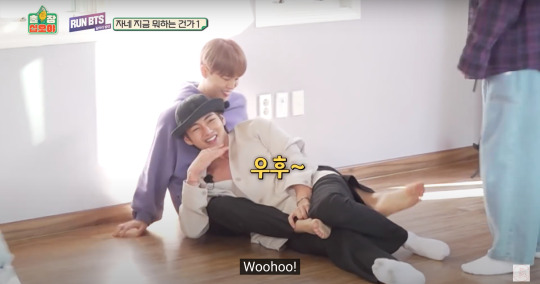
Or going a little further back to sometime in November 2020 while they were preparing for MMA 2020 and the Black Swan performance. We got the practice video today and if you pay attention to Jimin and Tae even there you notice that while Tae is waiting for his turn in the choreography, Jimin runs past him after his part is done (0:55) and they pat each other or do a “high five” or something along those lines as a way to cheer each other on. A very “we’re broken up” or “I will break up with him soon” thing to do, right? Or in min-January when Tae posted seven pictures out of which three were of just Jimin after an ARMY on weverse asked if anyone had any nice pictures they could use as wallpaper for their phone. Between all that I’m having a hard time honestly finding any moment where either of them seemed sad or “cold” toward the other the way you would be and feel if the person you love pulled away from you or broke up with you.

If you are still unconvinced and still think that is what Jimin tried to communicate to us, would Tae really have gone on national TV and said he likes Jimin the most? And would Jimin have agreed that he likes him a lot as well? Or looking at the making video of their Kloud Beer CF that was posted today as well, would Jimin really be looking and interacting with Tae this way if he decided to end things between them?



Also, going back a little, your mention of Jimin reflecting upon opportunities/chances now that it’s a new year. My question is based on what you made the judgment that this comment has to be about vmin and not about something entirely different in Jimin’s life, or maybe something connected to BTS as a whole? Just because of him asking Tae about Tannie? Jimin, as well as Tae and the other members, have entire lives outside of just their bonds with each other, entire careers, passion projects, families, friend groups, and that little bit of time they have to themselves, so immediately thinking Jimin’s comment must be related to his relationship/bond with Tae basically makes it seem like Jimin’s life is a romcom or a TV show in which the only thing that matters is if the main character will date or remain in a relationship with character B or not, but life isn’t like that.
Personally it reminded me of something Tae said during their Bring the Soul documentary about how BTS had the opportunities to go higher faster but they decided against them. Perhaps Jimin’s comment was about something like this as well, especially since we know Jimin is a very private person and very selective of the personal things he shares with us and the ones he doesn’t.
For the FESTA profile JK decided to give Jimin the “Cute Award” with the explanation that his “Face, height, fingers are cute” which, honestly, is just saying something that a) is true and b) has been said in millions of ways by every member across the last couple of years. I don’t see what the issue here is? During one of the episodes of BTSxGame Caterers Seokjin said that Jimin is very cute and that he has a small, beautiful face, so really he even added the word beautiful in there, which JK did not, so what really is the issue here? The fact its JK, right, that’s where the issue lies, to which I ask why? On this blog we’ve already established that there is (in our opinion and based on everything we’ve seen and heard) no romantic connection between JK and Jimin (nor Tae), not now and not in the past either, so why is him saying that Jimin is cute (which he is known for even by people outside of ARMY, or like James Cordon calling him his cute baby mochi) is an issue but Seokjin or any other member is not? Either we use the same measurements for everyone or we don’t compare or make such assumptions about any of them.
What I find curious, because this does make it seem like you, anon, are someone influenced by J*k*ok shippers and their opinions, see an issue in JK saying that about Jimin, and how that’s “proof” that Jimin and Tae can’t possibly be together, and yet you took no issue to Namjoon basically saying he wants to give Tae an award because he is so handsome he is above every list or Yoongi comparing him to Michelangelo's David, both of these being much more superlative and grand complements/awards than JK saying Jimin’s face, height and fingers are cute.
It’s funny how things that Jimin and Tae have said about and to each other that make their bond very clear (I want to live with my lovely Taehyungie forever or here is my love for you while handing Tae a bunch of red heart balloons or 95z is love, a statement I’m sure he wouldn’t post if that sentiment weren’t mutual) are all questioned or ignored, but something as basically trivial as a comment about Jimin being cute is turned into a major issue. The mental gymnastics is fascinating.
Lastly, going back to the first anon and their mention of how haters will use Jimin’s Award for Tae as “proof” that they “aren’t close anymore”--why do we care? Like Namjoon said in the Mic Drop lyrics Haters gon’ hate. They will say a lot of things about a lot of things and even make things up if they feel like it to push their agenda, so really, regardless of what Jimin would’ve said, or not said, they would’ve found a way to twist it and make it fit their narrative. Besides, what haters think has no actual effect or bearing on what Tae and Jimin have with each other, and neither does what other shippers claim. Haters and other shippers don’t control the narrative, BTS do, and everything Jimin and Tae have shown us in 2021, as well as the last eight years, shows me that their bond has only ever grown stronger and closer and more beautiful and awe inspiring, even while haters claimed they stopped being friends years ago, so why should you or I care what they think?
Like Yoongi once said in one of his vlives about how haters can write all they want, he won’t read it while they will get sued.
68 notes
·
View notes
Note
Is the popular headcanon that Nicky was illiterate, stupid and barbaric fitting in the stereotypes about Southern Europeans / Mediterraneans ? I’m guessing it’s from the American part of the fandom that’s choosing to not respectfully write Nicky since he is white while being virulent towards anybody that doesn’t perfected and accurately write Joe because he is MENA.
Hello!
Mind you, I am neither a psychologist, a sociologist nor a historian, so of course be aware these are my own views on the whole drama.
But to answer your question, yes, I personally think so. It definitely comes from the American side, but I have seen Northern Europeans do that too, often just parroting the same type of discourse that Anglos whip out every other day.
There is an abysmal ignorance of Medieval history – even more so when it concerns countries that are not England: there is this common misconception that Europe in the Middle Ages was this cultural backwater full of semi-barbaric people that stems unfortunately not only from trying to (correctly) reframe colonialist approaches to the historiographies of non-European populations (that is, showing the Golden Age of Islamic culture, for instance, as opposed to what were indeed less culturally advanced neighbours), but also from distortions operated by European themselves from the Renaissance onwards, culminating in the 18th century Enlightenment philosophes categorising the Middle Ages as the Dark Ages.
Now this approach has been time and time again proven to be a made-up myth. I will not go into detail to disprove each and every single one misconception about the Medieval era because entire books have been written, but just to give you an example: there was no such a thing as a ius primae noctis/droit du seigneur; people were aware that the Earth was not flat (emperors, kings, saints, etc, they were depicted holding a globe in their hands); people were taking care of their hygiene, either through the Roman baths, or natural springs, or private tubs that the wealthier strata of the population (and especially the aristocracy) owned. The Church was not super happy about them not because it wanted people to remain dirty, but because often these baths were for both men and women, and it was not that in favour of them showing off their bodies to one another. Which, you know, we also don’t do now unless you go to nudist spas. It was only during the Black Death in the 14th century that baths were slowly abandoned because they became a place of contagion, and they went into disuse (or better, they changed purpose and became something like bordellos). And, lastly, there was certainly a big chunk of the population that was illiterate, but certainly it was not the clergy, which was THE erudite class of the time. It was in monasteries and abbeys that knowledge was passed and preserved (as well as lost unfortunately often, such as the case for the largest part of classical literature).
So what does this mean? According to canon, Nicolò was an ex priest who fought in the First Crusade. This arguably means that at the very least he was a cadet son of a minor noble family (or a wealthy merchant one) who was part of the clergy. As such, historically he could have been neither illiterate nor a dirty garbage cat in his daily life.
Let’s then talk geography. Southern Europe (and France) was far, far more advanced than the North at the time and Italy remained the cultural powerhouse of the continent until the mid-17th century. Al Andalus in the Iberian Peninsula, the Italian States, the Byzantine Empire (which called itself simply Roman Empire, whose population defined itself as Roman and cultural heirs of the Latin and Greek civilisations): these places have nothing to do with popular depictions of Medieval Europe that you mainly see from the Anglos. Like @lucyclairedelune rightfully pointed out: not everyone was England during the plague.
Also the Middle Ages lasted one thousand years. As a historical age, it’s way longer than anything we had after that. So of course habits varied, there was a clear collapse right after the fall of the Western Roman Empire, but then things develop, you know?
Anyway, back to the point in question. Everything I whipped up is not arcane knowledge: it’s simply having studied history at school and spending a few hours reading scientific articles on the internet which are not “random post written by random Anglo on Tumblr who can hardly find Genoa on a map”.
Nicolò stems from that culture. The most advanced area in Europe, possibly a high social class, certainly educated, from Genoa, THE maritime superpower of the age (with…Venice). It makes absolutely no sense that he would not be able to speak anything past Ligurian: certainly Latin (the ecclesiastical one), maybe the koine Greek spoken in Constantinople, or Sabir, or even the several Arabic languages from the Med basin stretching from al Andalus to the Levant. Because Genoa was a port, and people travel, bring languages with them, use languages to barter.
And now I am back to your question. Does this obstinacy in writing him as an illiterate beast (basically) feed into stereotypes of Mediterranean people (either from the northern or the southern shore)? It does.
It is a typically Anglo-Germanic perspective that of describing Southern (Catholic) Europeans are hot-headed, illiterate bumpinks mindlessly driven by blind anger, lusts and passions, as opposed to the rational, law-abiding smart Northern Protestants. You see it on media. I see it in my own personal life, as a Southern Italian living in Northern Europe for 10 years.
Does it sound familiar? Yes, it’s the same harmful stereotype of Yusuf as the Angry Brown Man. But done to Nicolò as the Angry Italian Man (not to mention the fact that, depending on the time of day and the daily agenda of the Anglo SJW Tumblrite, Italians can be considered either white or non-white).
Now, the times where Nicolò is shown as feral are basically when he is fighting (either in a bloody war or against Merrick’s men) or when Yusuf is in danger. Because, guess what, the man he loves is being hurt. What a fucking surprise.
Nicolò is simply being reduced to a one dimensional stereotype of the dirty dumb angry Italian, and people are simply doing this because they do not seem to accept the fact that both he and Yusuf are two wonderfully complex, flawed, fully-fledged multidimensional characters.
So I am mainly concentrating on Nicolò here because as an Italian I feel more entitled to speak about the way I see the Anglo fandom treating him and using stereotypes on him that have been consistently applied to us by the Protestant Northerners. I keep adding the religious aspect because, although I am an atheist who got debaptised from the Catholic Church, a big part of the historical treatment towards Southern has to do with religion and the contempt towards Catholic rituals and traditions (considered, once again, a sign of cultural backwardness by the enlightened North).
I do not want to impose my view of Yusuf because there are wonderful Tumblr users from MENA countries who have already written wonderful metas of the way Yusuf is being depicted by non-MENA people (in particular Americans), especially (again) @lucyclairedelune and @nizarnizarblr.
However, I just want to underline that, by only ever writing Yusuf as essentially a monodimensional character without a single flaw, this takes away Yusuf’s canon multidimensionality, the right he has to feel both positive but also negative feelings (he was hurt and angry at Booker’s betrayal, allegedly his best friend, AND HE HAD EVERY RIGHT TO BE – and I say this as a Booker fan as well).
I have not been the first to say these things, it is nothing revolutionary, and it exactly complements what the MENA tumblr users in the TOG fandom have also been trying to say. Both of us as own voices people who finally have the chance to have two characters that are fully formed and honest representations of our own cultures, without stereotypes or Anglogermanic distortions.
And the frustration mounting among all of us comes from the fact that the Anglos are, once again, not listening to us, even telling us we are wrong about our own cultures (see what has happened to Lucy and Nazir).
What is even more frustrating is that everything in this cursed fandom – unless it was in the film or comics – is just a bloody headcanon. But these people are imposing their HCs as if it were the Word of God, and attacking others – including own voices MENA and Italians – for daring to think otherwise.
I honestly don’t expect this post will make any difference because this is just a small reflection of what Americans do in real life on grander scale, which is thinking they are the centre of the world and ignoring that the rest of the world even exists regardless of their own opinions on it.
But still, sorry for the length, hope I answered your question.
#i am also expecting to receive lots of shit for this but can't say i care#the old guard#tog discourse#nicolo di genova#the old guard meta
241 notes
·
View notes
Photo
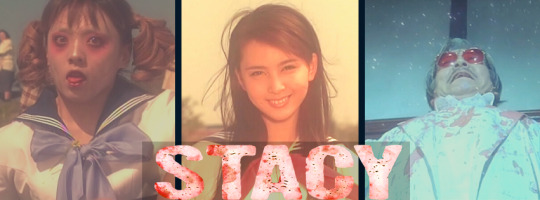
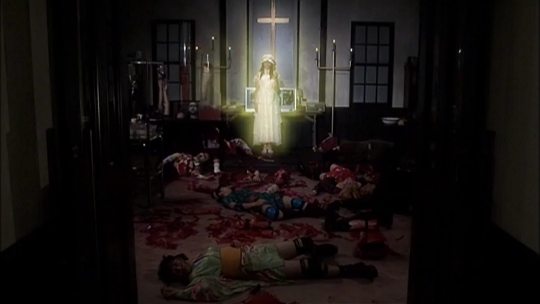

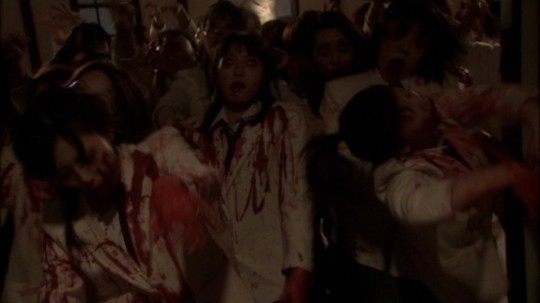
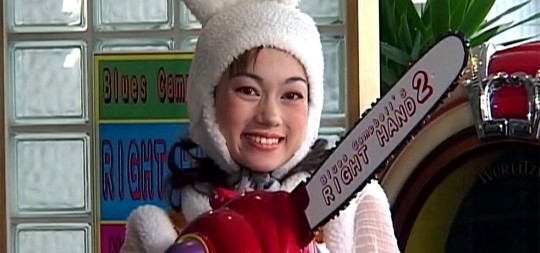
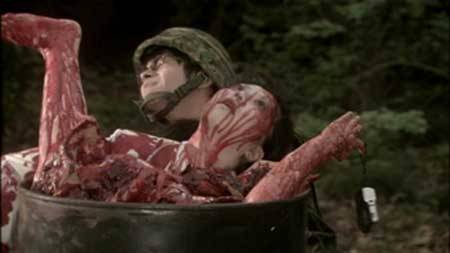
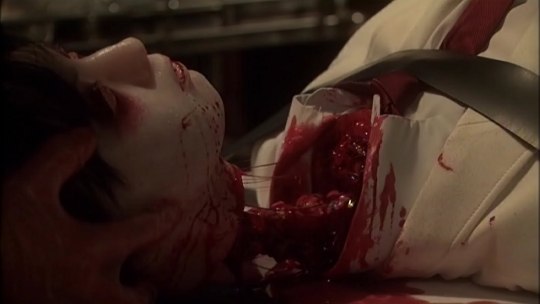
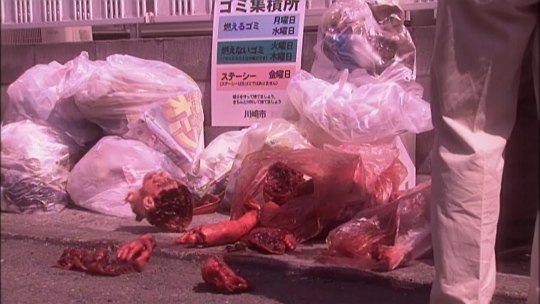
Published on grimoireofhorror.com and The Yurei 07/06/21
For the length of time that zombie movies have been a part of horror, it is only natural that the subgenre would eventually go stale, occasionally requiring a total re-evaluation of the creature design to breathe new life into the genre. As with classics such as White Zombie (1932) becoming obsolete after George A. Romero released his now infamous Night of the Living Dead (1968) , which redefined what made the undead fear-inducing to a new generation of horror fans, Stacy revigorated the predictability of the subgenre. As time progressed, and these other 'new-wave' zombie films grew in popularity, the formula had consequently started to show fatigue again.
Enter Stacy: Attack of the Schoolgirl Zombies, a film not afraid to diverge from expectations and instead forge its own path into fairly uncharted territory to create a story still unrivalled in a unique vision to this day.
What Is It
Stacy: Attack of the Schoolgirl Zombies is a 2001 horror comedy, directed by well-known splatter director Naoyuki Tomomatsu who's known for films such as Zombie Self Defence Force (2006), Maid-Droid (2008) and the notorious Reipu Zonbie: Lust of the Dead series. The story was an original novel written by Kenji Ohtsuki, with the screenplay adapted by Chisato Ogawara.
In the near future, the entire world is struck with a bizarre malady which affects every girl between the ages of 14 to 16 years old. Victims first experience a period of giddiness referred to as "Near Death Happiness" ("NDH") before they expire. Within minutes of death, the victim rises again as a flesh-eating zombie - a "Stacy". These Stacies run amok until they are cut up into pieces in an act called "Repeat-Kill".
What Did I Like About It?
Containing a heavily defused cinematography, warm saturated colours and a soundtrack incomparable to anything else in the genre, the film maintains an ethereal, dream-like feel that encompasses the obscurity of the story well. This, mixed with the extreme violence and gore, leads to a feeling of somewhat of a beautiful nightmare.
Stacy: Attack of the Schoolgirl Zombie manages to utilize the low budget effectively, using practical special effects when possible. The utter carnage on screen at times plays into the comedic side, teetering on a fine line of being impressive and cheesy in a perfect duality of action and dark humour. The usage of CGI is minimal, only being used when practical effects would not be viable to apply.
Natsuki Kato (Battle Royale 2: Requiem 2003) gives a great performance as Eiko and her decent into Near Death Happiness. Her near instant switch in her personality from somewhat grounded to a near hysterical disequilibrium can feel unnerving at times, adding a laver of sympathy to the character as she faces her impending death with an upbeat, positive attitude.
Stacy: Attack of the Schoolgirl Zombie feels like a love letter to Western horror, with many nods to some of the greats in the genre such as Bruce Campbell and George A. Romero (just to name a few). To the credit of the production, these influences are used as fun references rather than a crutch to help shape the story.
The film has a host of interesting characters with their own separate sub-story, but by far the most entertaining are the members of the Charlie's Angels inspired 'Drew Illegal Repeat Kill Troops'. Three young girls perform the act of cutting Stacies into 165 pieces to fully stop the undead menace, in order to each raise one million yen before succumbing to NDH and turning into Stacies themselves. They are raising this money to be 'Repeat Killed' by Takashi Sorimachi, a famous singer/actor in real life. Ultimately, their performances are one of the highlights of the film and are a great addition to the story overall.
What Didn't I Like About It?
The use of CG effects are minimal and effectively used, except for a few CG establishing shots. Being poorly animated and in contrast with the rest of the film, the feel ripped out of an early 90's point and click adventure. Fortunately, these only appears one or two time throughout the entire film and are forgotten about as quickly as they appear.
I personally felt that the movie could of spent more time with the Drew Illegal Repeat Kill Troops and their story. In total, their screen time adds up to only 10 minutes. Their addition would have only benefited the story and, in turn, the comedy.
Final Thoughts
Considering the utterly unrealistic story (even for a zombie film), the entire film is played straight rather than becoming a parody of the genre and, therefore, itself. The films serious take on a whacky story has helped cement its place as both in the genre and as one of my favourites, being unlike anything I have come across before and have yet to since.
Stacy: Attack of the Schoolgirl Zombie is a must watch for those who are in need of a new take on zombie films or anyone interested in low budget J-Horror. It is absolutely sure sure to get a few laughs out of everyone.
11 notes
·
View notes
Text
Medium & Marketing for 90′s Anime Dubs
Today is Hayao Miyazaki’s 80th birthday, which made sure my dash was filled with Ghibli tidbits. A discussion of my personal favourite, Kiki’s Delivery Service, brought up its ill-fated original dub by Disney in 1998. Ghibli still didn’t have the courage yet to put their foot down on changes for international releases, and so there are a lot of alterations - the theme songs are changed to be anglicized, almost any “dead space” or quiet moments in the film have someone (normally animal sidekick Jiji the cat) improv lines over the scenes to liven them up, and in particular the ending is changed to be less bittersweet as Jiji, who in the original Kiki permanently loses the ability to talk to as a sign of growing up, regains his voice.
These changes slot neatly into the zeitgeist of all 90′s anime changes - a disregard for the property’s core appeal as they were bowdlerized for a western audience. Sailor Moon is an infamous victim of a similar process - at least Kiki took place in fantasy Europe, the Sailor Moon dub’s attempts to pretend that the show doesn’t take place in Japan were simply insane as they cut out or blurred every appearance of Japanese writing in the show, leaving reams of animation frames on the floor in the process.
(Tangent time: the greatest scene ever is one where, upon reading a note by Usagi, to prove it was her Minako/Sailor Venus comments “it must be from her, its written entirely in hiragana”, the simpler form of written Japanese compared to kanji, which Usagi as a running gag cannot write. So in the dub they just...blur out the text of the note, and have Minako comment “I had to read it with my imagination. It's all written in funny symbols!". I distinctly remember watching the episode live when I was 12 years old and going “wait what the fuck does that even mean?” and suddenly realizing that the show was changing its own script, it was a trip of a moment)
Like most people I do malign these changes, but I am actually here to partially defend them via contextualization. The idea that American audiences would have cared that the show was Japanese is pretty dumb, but what you often hear are statements like “kids in Japan appreciated Sailor Moon/Kiki’s Delivery Service just fine, they didn’t need to change it”. That is possible, but it mistakes why changes are being made to begin with - its not the “culture of children in the US vs Japan”, its intended market via the medium of distribution.
Kiki’s Delivery Service was released in Japanese theatres in 1989, and it was the highest grossing film of the year in Japan (about ~US$18 million, man do things change). Kiki’s Delivery Service the Disney dub, was....released on VHS in 1998. VHS releases and movie theatre releases aren’t really intended accomplish the same thing. Remember all those direct-to-video Disney sequels? Lion King 2: Simba’s Pride? Cinderella 3: A Twist in Time? Remember how they were all just garbage? Anyone looking back at them today cringes, with a few exceptions. But none of us cringed when we were 8! My partner is a huge Disney fangirl, and when she was young she didn’t even distinguish between the theatre release and the VHS sequels - it was all Disney, you just lined them up and played them in a row as the complete canon. Yes, these movies sucked partially because they were low budget, but they weren’t actually *that* low budget - and not the throwaways your memory probably tells you they were. Lion King 2? Made ~$300 million in net sales, almost as much as the original Lion King’s theatrical run.
What those Disney VHS sequels and Kiki share is the fact that their intended market was *only* children. That is the point of VHS - you put it on for your kids and then go make dinner. Its the virtual babysitter, the kids can loop it while reenacting every scene with their stuffed animals. Movies released in theatres don’t serve that role at all - the parents are paying $15 a head and they are trapped in their seats for the whole runtime. It has to entertain everyone, or you aren’t going to go, or at least not as often. VHS releases sucked because kids don’t care, they actually do enjoy the constant quippy lines and dumb jokes. That is equally true for Japanese kids - its just that Kiki’s intended audience wasn’t Japanese kids, it was “all ages” - a very different category.
The same is true for Sailor Moon, by the way. The idea that kids in Japan could “handle more mature themes like death” unlike American audiences doesn’t hold up quite as much when you look at Disney theatrical releases like the Lion King - Mufasa’s death pulls no punches, but kids didn’t mind. And Japan does have shows like Doraemon that are just as childish as the 90′s western cartoons you remember. Its that Sailor Moon’s audience wasn’t just kids.
Bishoujo Senshi Sailor Moon aired in March of 1992 on TV Asahi. Asahi was not a kids network, and Sailor Moon did not air in a kid’s block - instead in its “Anime Block”. It aired on Saturdays, at 7:00 PM. For most of its runtime, the 7:30 slot after was held by Slam Dunk, a hyper-serious basketball anime adapted from a manga in Weekly Shonen Jump. You think director Kunihiko Ikuhara was throwing in queer relationships and even trans characters, and every other villian was a half-naked seductress, because it was gonna really resonate with 8 year olds? Sailor Moon was for 8 year olds, yes...and for otaku. So, 15 year olds, lets not exaggerate here. But still, its hype, its success, came just as much from its teen and adult fans as much as its young devotees. Which was intentional - it was *marketed* that way. That's why it aired at 7:00 PM on a Saturday.
Sailor Moon’s original dub, on the other hand, aired on UPN at, yeesh, 6:30 AM?? Then on USA’s Cartoon Express at the much more reasonable 8:30 AM, and later on Toonami at 4:00 PM. All of these are kids slots, to watch over cereal or snacks before/after school while the parents are busy. You do not expect the adult in the room to be watching alongside the kid, or for teens to really be paying attention.
And to cut off the logical objection, a show like Sailor Moon was just not going to get a 7:00 PM Saturday slot in the US in the 90′s. Nor was Kiki going to get a movie theatre release in 1998 of any scale. Movie releases are expensive, Saturday slots are precious, the funding just wasn’t there for something so untested as Japanese anime. There was no demand in the west for it - that demand would only be created later, by a generation who grew up on, well, shitty Sailor Moon dubs and Kiki VHS releases. And what success in the media slots these shows and movies did have are shaped by those market niches.
I don’t want to be over-deterministic on this - at some point Cartoon Network rolled the dice on Cowboy Bebop and Full Metal Alchemist and it worked - maybe they could have done that in 1995 with like Neon Genesis Evangelion, who knows! And of course US children’s cartoons are, beyond market forces, burdened with regulatory moralizing that Japanese media does not have. But I do think these 90′s dub efforts should get the proper context for the constraints they were operating under, and why they existed at all, as they are criticized.
37 notes
·
View notes
Text
[INTERVIEW] Lay - 200819 Rolling Stone India: “How Lay Zhang Claimed The Throne of M-pop”
"The singer-songwriter and producer offers an in-depth look into his latest record ‘Lit,’ his evolution as an artist and finding the balance between East and West
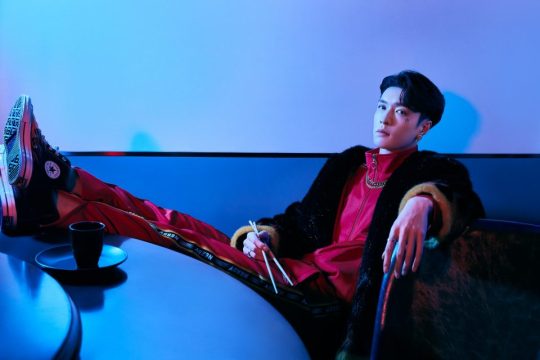
When I last spoke to Lay Zhang in 2018, he was embarking on an ambitious but daunting journey to bring Mandarin pop aka M-pop to the world. “I hope they think, ‘This artist isn’t bad,’” he had said with some trepidation in his voice. “I hope that they find my music special and maybe… they’ll want to learn more about me and Chinese music.” The singer-songwriter and producer aspired to create a true hybrid of traditional and modern music, a sound that defines our generation’s ability to package the past for the future.
Zhang, more commonly known by his stage name LAY, first debuted in 2012 as a member of world-famous K-pop group, EXO. Although he remains a member of the group, he’s spent the last couple of years in China to focus on a solo career and spotlight his own country’s burgeoning pop scene. It’s a process he kicked off with his second studio album Namanana in 2018, but he was still some time away from realizing his dream of pushing Chinese pop to a global stage.
It’s been nearly two years since our conversation for Rolling Stone India’s November 2018 cover feature, and any signs of trepidation are a thing of the past for LAY. We could chalk it up to him being two years older and wiser, but I’d like to think it’s because he kept his promise to bring M-pop to the world. If Namanana was just a dip in the pool of fusion experimentation, his latest studio album Lit is the deep dive.
“It is the evolution of M-pop for me,” LAY explains. “I wanted to take it to another level. When you hear the Chinese instruments, you know it is a different sound and vibe. The style is more pop, R&B, and hip-hop influenced with the Chinese instruments thoughtfully mixed in.” Comprising a total of 12 songs (all written and co-produced by LAY) Lit was released as two EPs instead of one LP; the first dropped in June while the second made its appearance in July. Nearly every track presents a fresh blend of traditional Chinese instruments like the hulusi, guzheng, flutes and gong with modern genres like trap, R&B, soul, hip-hop, future bass, dubstep and more. It’s a complex, refined and intricate record, utilizing production techniques that clearly outline LAY’s growth as an artist over the past two years. In retrospect, Namanana comes across a slightly more naive record–innocent and optimistic with a hope that international audiences would embrace both M-pop and LAY. Lit however seeks to take a different path and carves out the future LAY envisions with cool confidence and fearless production.
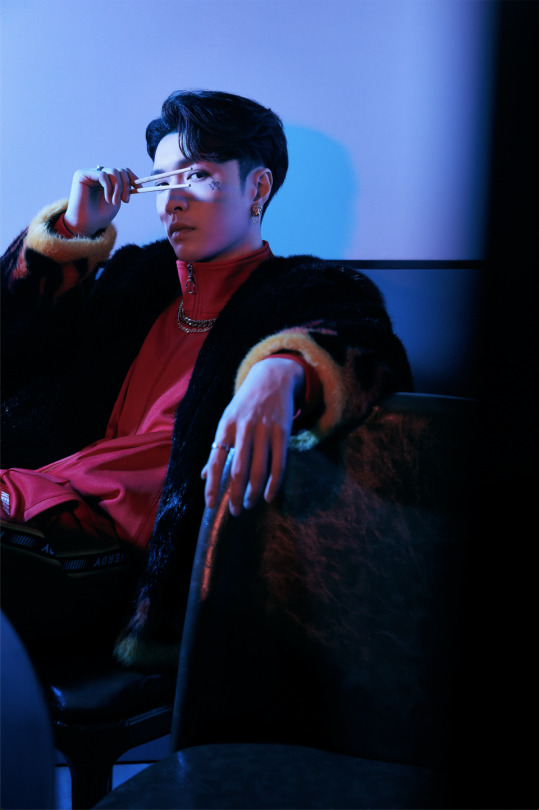
The tracks seesaw smoothly from Mandarin to English and back, with LAY showcasing both his vocal and rap skills. It’s an extremely powerful and expansive album, hair-raising at some moments due to the sheer surprises the artist packs in (at one point I hear what sounds like the tabla on “Call My Name” and it catches me totally off-guard.) Some of the collaborators on the record include big names like hip-hop hitmaker Murda Beatz, Grammy Award-winning producer Scott Storch, composer and producer Mitchell Owens and Grammy-nominated songwriter Mike Daley to name a few. For the title track “Lit,” LAY recruited China-native Anti-General who created a vicious and chilling trap/dubstep beat to complement lyrics that decimate LAY’s haters, gossip-mongers and the media, challenging them to come forward and take him down if they dare. The track sees the singer-songwriter rightfully crown himself a ‘king’ and leader in the music industry.
If that wasn’t enough, the music video for “Lit” is without a doubt one of the best released in 2020. With hundreds of extras, dancers, impeccable CGI and a compelling storyline, it’s more movie than music video, portraying LAY as a warrior king who refuses to be defeated. As executive producer, music director and co-choreographer on the project, LAY pays homage to China’s rich history and culture with tons of historical references and traditional symbolism. I tell him I particularly loved the symbolism of a white lotus emerging untouched and pure from the black ink–representing LAY’s rise in the industry–and he shares that the magnificent dragon that appears at the end was his personal favorite. “It was super important that we added it in,” he says. “It represents my wishes, aspirations and my relentless desire to always pursue perfection in the works that I create. I want my dancing, visuals, and music to be the very best it possibly can be.”
Lit is also thematically more complex and layered than any of LAY’s previous works, exploring concepts that revolve around confidence, love, fame, the media, success and more. “The album continues to explore chasing your dream,” the singer explains. “This time it’s about more personal things in my life. Like hometown, family and self-doubt.” A phonetic play on the word for lotus (莲 / lian) in Mandarin, ‘lit’ is a clever pun used to describe LAY’s similarity to a lotus and his prowess as a musician. He named the album after the lotus because of the symbolism of it growing and blossoming from dirt or mud. The lotus also continues the theme of duality with Lit’s two-part release, and, according to LAY’s team, “represents a new birth plus a new sound in the midst of all his past achievements.”
The album’s success more than speaks for itself– when the pre-order for Lit went live on China’s QQ Music streaming platform, nine certification records were instantly broken as it surpassed 1.5 million pre-orders within seven minutes and 19 seconds. This immediately pushed the EP to Number One on QQ Music’s daily and weekly album sales charts. Lit has also made LAY the best-selling artist in China in 2020, with a whopping 2.5 million records sold. It’s a testament to his drive and determination as an artist, the attention to detail and refusal to back down. The record’s international success was no less, hitting top 10 positions on iTunes charts across 32 countries, bagging 21 Number One spots and firmly cementing LAY’s position as the global megastar that he is.

Some things however, never change; brand deals, TV shows, multiple singles, EPs and collaborations keep his schedule completely booked and– just like back in 2018– it’s extremely tough to pin him down for a conversation. He’s currently in the middle of filming a reality show and has several other projects in the pipeline, but still makes the time to catch up and answer a few questions for Rolling Stone India. In this exclusive interview, LAY details his most successful record yet, the journey of finding the balance between East and West, dealing with the dark side of media attention and why the relationship between an artist and their fans needs to be a two-way street.
Congratulations on the release and tremendous success of Lit! It is an absolutely phenomenal record and I was thrilled to see you explore so many new streams of production. Can you tell me a little bit about the process of making this album and do you feel you met your own expectations for it?
For this album I wanted to mix in Chinese traditional instruments and tell Chinese stories. It is the evolution of M-pop for me. I wanted to take it to another level. When you hear the Chinese instruments you know it is a different sound and vibe. It is hard to say if I met my own expectations. As an artist you never ever feel your work is perfect. You can always find spots where you can improve. But I think what I was able to do with my team in the time we had was great.
You dove deeper into the fusion of tradition and modernity on this album than Namanana—there was a larger variety of Chinese instruments used as well as bilingual wordplay with language in the lyrics. In what ways do you feel you’ve evolved as a producer and songwriter since that album to Lit?
I am still trying to find the right style and combination to share my music and Chinese culture with the world. Lit was an example of my growth. I had this desire to include traditional stories and instruments from Chinese culture. Trying to find the balance with the Western music was challenging. I had to think and spend a lot of time arranging the chords around and fitting everything together. Also with this album I am talking about things in a more personal level and taking time to explain with more of an artistic style. I feel like I am growing up on this journey.
Lit is the first part of a series of EPs which will make a whole LP—why did you want to release it in this format and when did you begin working on the record?
I split it into two parts to give time to people to listen to it. I feel like if I released 12 songs at once, people may not give enough time to listen to each track. But when there are just six tracks each time, then it gives people time to listen more carefully. I started this project maybe early 2019.
The title track “Lit” is about your battle with the media, hateful netizens and malicious comments/rumors. Does it get easier over time to deal with this obsessive analysis of your life or does it never really ebb away?
It will always bother you, but over time you learn to deal with it. You focus on it less and less and back on what you love doing. When I make my music or learn dance or do anything I love, I kind of forget about it. Just focus on your goals and dreams and everything else becomes background noise.
The music for “Lit” is, in my opinion, the best of 2020 so far. Can you tell me a little about your role as the executive producer and music director on this project? How did the concept come about?
I was very involved in the project. I oversaw a lot of things that happened and discussed with almost everyone on the team on how to achieve my vision. When I was making the song I was thinking about how do we share Chinese culture. I thought filming in an ancient palace would catch people’s attention. It took off from there when discussing with the director. We started adding more and more elements of Chinese culture. We were trying to tell the story of Xiang Yu, a warlord who rebelled against the mighty Qin Dynasty but wasn’t able to conquer China. I’m Xiang Yu, but I’m trying to change my fate and succeed in my goal.
You incorporated Chinese Peking Opera in the music video version of the track and visual elements of Peking Opera in the album art for “Jade”–What was the motivation behind that decision and is there a particular story that the opera section references?
I wanted to bring people back in time to ancient China. I reference the traditional Chinese story of Xiang Yu and his love, Concubine Yu, so then I added in select passages from the Peking Opera Farewell My Concubine which tells their tragic story.
You displayed your incredible skills in dancing in this music video and you recently talked about how dancing was a way for you to show the audience who you are. Did you feel a sense of relief that the audience can see you or understand you a bit better after the release of “Lit”? Can the audience ever truly understand an artist?
It feels good to know people can see me and understand me more. I don’t think people can ever understand an artist completely. But they can relate to many things. I think that is a challenge for an artist to see how they can use their music to connect with people. It is a worthy challenge.
How do you hope that the artist you are today crafts the Lay Zhang of tomorrow?
I always believe in working hard and improving. I hope that the Lay Zhang of tomorrow continues to keep looking for ways to improve his art. I hope he never gives up his dreams.
Last time we spoke, we talked about Asian traditions represented in global mainstream pop culture. Now as you’ve grown as a megastar, you are one of the leading names in pop filling that space, bringing your heritage to the stage. Why is it important for our generation to see ourselves and our histories represented on these platforms by artists?
It is important for people to remember where they come from. They should know their own history and how their culture came to be. Also, it lets other people know another culture and have a deeper understanding. It can stop miscommunication and it helps people be closer to each other.

Why do fans need to see themselves in an artist? Does it work the same on the other side, do you as an artist see yourself in your fans?
I want fans to be able to relate with an artist. It is important for a fan to see themselves in artist and an artist to see themselves in a fan. When you can see each other you are able to understand each other better. You can connect with each other and really feel things.
I absolutely love the ‘Re-Reaction’ videos you have been doing for years and it means a lot to your fans that you take the time to do it. Why did you want to do this series and what does it mean to you to be able to connect with your fans like this and see them react to your work?
I am curious to know what fans and people think of my work. I want to know where I can improve. I want to keep growing as an artist. But also I want to let my fans know that I am reading their comments and I see everything they say.
Other than releasing more music, what are the rest of your plans for 2020? Do you have any film projects that you’re looking at taking up or are you planning on doing something completely different?
I am busy filming a TV drama and a few reality TV shows for the rest of 2020. A very busy schedule.”
Photo links: 1, 2, 3, 4
Credit: Rolling Stone India.
#EXO#EXO M#Lay#200819#exo im#exo m im#lay im#p:news#t:news#fs:rolling stone india#comeback:Obsession
67 notes
·
View notes
Text
Glenn Gaylord’s Capsules From The Bunker – Summer 2021 Lockdown Style
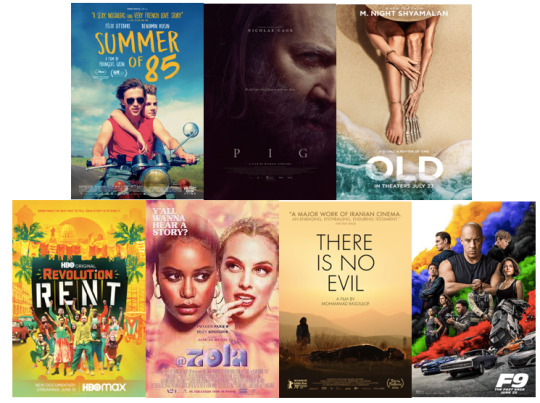
Like many of you, I’ve lost all concept of space and time during this lockdown era. I’d watch movie after movie, but somehow forget to write about them. I’d consume films for sustenance, but then I’d move on to the next task of cleaning a room, doing a crossword puzzle, or staring at my dog for hours on end. Thank goodness I have a few friends to have breakfast with every now and then, or else I’d have assumed I had been transported to a cabin in Montana. “Am I a film critic or a hermit?” I’d ask myself daily…that is, if I even understand what days are anymore. All of this is to say that I have a lot of catching up to do now that we’ve taken a baby step or two towards returning to some sense of normalcy. Wait a minute. What’s that? Highly transmissible variants? Back into the cave I go. While I still can, I’ve managed to blurt out a few capsule reviews of some films worth mentioning.

In Between Gays – Film Review: Summer Of 85 ★★★★
Prolific French filmmaker, François Ozon, has made a career out of finding dark crevices in the most unexpected of places. Here, with Summer Of 85, he tweaks this New Wave era gay romance just enough to upend our expectations. In pure Talented Mr. Ripley meets Call Me By Your Name meets Luca fashion, Ozon spins what could have been that sun-dappled, seaside summer that changed everything into a love that perhaps never was, zeroing in instead on a young man’s obsession for something unobtainable. Beautifully shot and acted, Ozon takes the story to more provocative places than you’d initially expect while still maintaining the boppy fizz of a great Cure song. Despite the mish mash of tones, the film has a pulse all of its own. It’ll make you swoon, pull the rug out from under you, and then make you wonder how he managed to quietly get a little twisted.
Summer Of 85 currently in select theaters, see official website for details. Released on DVD and BluRay August 17th.
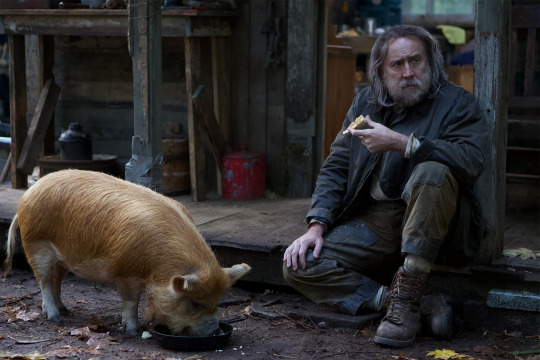
Truffle In Mind – Film Review: Pig ★★★★
Writer-director Michael Sarnoski makes an auspicious feature debut with the story of a man searching for his stolen truffle-hunting pig. Caked in dirt, blood and looking not so much like a homeless man but as a person who died inside a thousand times over, Nicholas Cage gives one of his best performances ever as a man who seeks the truth at all costs. He asks his only connection to the outside world, Amir, played wonderfully by Alex Wolff, to drive him through Portland’s dark underbelly to retrieve his pet companion.
Although the film takes us to a rather unbelievable “Fight Club” moment, it generally holds its mood with credibility. It’s a great calling card, not only for Sarnoski, but also for his talented cinematographer Patrick Scola, who brings a painterly quality to every single image. The film finds beauty in a bite of food, a breath of air, or simply the compassion between two main characters who have seemingly little in common. It’s a shame the trailer elicits laughs when Cage utters lines like, “Who has my pig?” Clearly they want to sell the actor’s neo-gonzo persona, but Cage brings so much depth and seriousness to this project, only raising his voice once. He deserves the highest praise for committing to such an oddly touching, gorgeously quiet story. At risk of sounding Dad-jokey, the only thing that hogs the scenery is his porcine friend.
Pig is in theaters now.
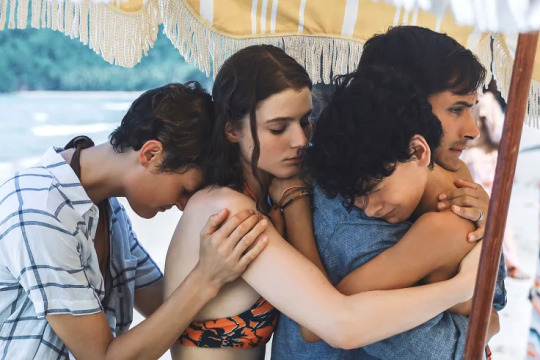
All Is Lost – Film Review: Old ★★
In 1999, M. Night Shyamalan made a great film, The Sixth Sense, and has been chasing that dragon ever since, often to diminishing returns. His films, however, often do well because he has great concepts, a keen eye for visuals and timing, yet things always seem to turn clunky and inane real fast. With Old, he continues down that path by giving us something compelling—a group of people on a beach who age quickly—and ruining it with dialogue seemingly written by an algorithm and rendered unintelligible much of the time, while the terrific cast seem to have no idea how to make Shyamalan’s words sound any better than a high school play. A couple of sequences did make me sit up and take notice, and he uses compositions and offscreen space well, but overall, Old plays like a stretched-out episode of Lost, and like that cool but overstuffed series, you’re not gonna get very good explanations as to what transpires. Sure, the big twist works well enough on some level, but it doesn’t save you from the discomfort of watching good actors flatline in more ways than one.
Old is currently in theaters nationally.
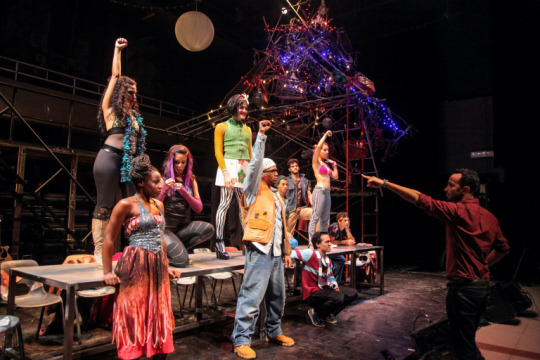
Hi Fidel-ity – Film Review: Revolution Rent ★★★1/2
Shot in 2014, Andy Señor Jr., who played Angel on Broadway along with a host of other credits, staged the classic musical Rent in Havana during a thaw in our relations with the Communist regime. He did so against the wishes of his Cuban family, who suffered under Castro and insisted his production would merely serve as a propaganda tool for the government. He plows ahead instead, capturing the months long process in a rather artless home movie style. The aesthetics don’t carry any weight here when you have such a compelling subject matter. Witnessing his actors struggling with their performances while also living in harsh conditions adds new layers to the late Jonathan Larson’s story of squatters in the age of AIDS.
With a limited talent pool, one of whom doesn’t feel comfortable with the gay subject matter and another who lives with HIV himself, Señor finds new connections to Larson’s material as well as an affection for his heritage. What we may have taken for granted here in the US in terms of sexuality and gender expression feels like a whole new experience when seen through a Cuban lens. Señor speaks out against the Castros with quick sequences showing moments of oppression, thus preventing this film from perpetuating the lies of its government. Instead, he gifts the people of this poor, struggling country with a real sense of community and its first burst of musical theater in ages. Sure he’s a privileged westerner who dangles hope in front of people only to return to his cushy life, but he does so with heart and good intentions. You end up loving and rooting for his cast in this moving, sweet documentary.
Revolution Rent is currently streaming on HBO Max.
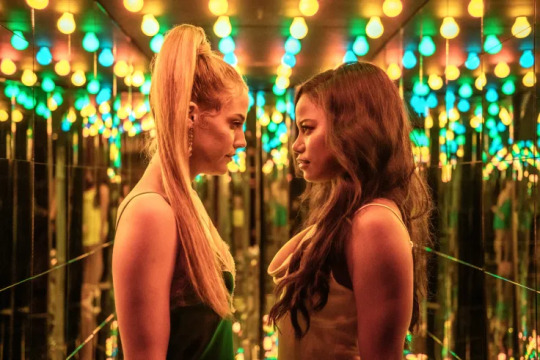
Do The Hustlers – Film Review: Zola ★★★★
Call me wary when I went to see a movie based on a viral twitter thread and directed by Janicza Brava, whose Sundance Award-winning short, Gregory Go Boom, proved to be not only tone deaf but downright offensive towards people with disabilities. Her new film, Zola, excels however, in ways her prior work has not. Taylour Paige, a standout in Ma Rainey’s Black Bottom, plays the title character, a stripper who meets Stefani (Riley Keough) one night and is convinced to travel with her down to Florida where they can make a lot of money dancing all weekend. Things, however, do not go as planned, with Zola’s story escalating from one insane twist after another. Paige and Keough are outstanding, as are Nicholas Braun and Colman Domingo as their traveling companions. Jason Mitchell, so great in Straight Outta Compton and Mudbound, brings a wild, dangerous energy, something he shares with the film itself. It comes across as The Florida Project meets Hustlers, but with its own surreal, unexpected tone. I laughed out loud often, especially with Paige’s loopy reactions to her surroundings and the giddy, zippy energy on display. Zola chews you up, twerks on your face, and spits you out, exhausted yet anxious to see whatever this talented group of people will do next.
Zola is currently playing in select theaters and available on demand.
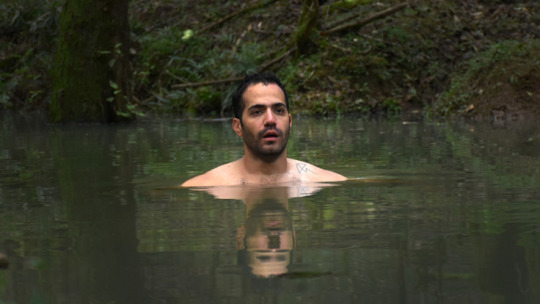
Banned On The Run – Film Review: There Is No Evil ★★★★
It’s impossible to review There Is No Evil without giving away its central premise, so I will avoid as much description as possible. Iranian filmmaker Mohammad Rasoulof has crafted a four-part anthology of sorts around an agonizing moral issue important to people worldwide. At the end of the first part, a stunning cut to an unforgettable visual reveals everything and allows you to watch the rest with informed eyes. Rasoulof seamlessly excels at different genres, from family drama, to action escape, to romance, weaving a tale of such depth and sorrow for its talented cast of characters.
The making of it proves as interesting at the film itself. Banned by the regime from producing feature films for two years and prohibited from traveling outside of Iran, Rasoulof, like any crafty filmmaker, came up with an ingenious plan. He slipped under the radar by calling these four short films, mostly shot in small towns far outside the reach of Tehran, and then had the final product smuggled out of the country. A filmmaker with such talent not only at telling stories, but the with ability to will his vision into existence against all odds, deserves the world’s attention.
There Is No Evil is available on DVD, BluRay and VOD now.

In Space No One Can Hear You Think – Film Review: F9: The Fast Saga ★★★
Considered review-proof, the Fast and the Furious franchise has ruled the box office for the past 20 years, so my calling its latest entry, F9: The Fast Saga, monumentally dumb will have zero influence on anyone’s decision to see it. We all know it’s big and stupid, as do the filmmakers. These films, deliver said stupid with such gusto, that you simply surrender and have a great time nonetheless. Nothing, however, prepared me, for this series to go all Moonraker, sending a car to a place no car has ever gone before. You’ll know it when you see it and probably say, “That’s ludicrous!” and also say, “That’s Ludacris!”
F9: The Fast Saga is currently playing on every screen on Earth and in select theaters throughout the universe.
4 notes
·
View notes
Text
How to Kill a Great Film in 2021
Good Films die every day in Hollywood. Contracts are written and thrown away, writers can be hired and fired as fast as old drafts can be thrown away and rewrites can be made days before production. And when that doesn’t stop a project from being a success, Producers can cut funding at the second to final lap around the track, locations can change, or in more recent cases, the entire world can change.
But let’s pretend this pandemic isn’t currently still in effect and fast forward to 2023, when cinemas are open again (sadly not for the Cinerama Dome) and a new movie is released once a week and regardless of how much we enjoy it, we get to talk about it. In this fantasy land, let’s talk about the 5 ways you can kill a good movie before, while, or after Production…
Relationship between Director and Producer
Whenever the release of a certain cut of a film that isn’t what the Director intended on releasing makes its way to Theatres, the thing that comes to most people’s minds is ‘Studio Interference’. If you’re an aspiring filmmaker, writer or just a fan of Cinema in general, you’ve heard all of your favourite Filmmakers talk about how much they hate their Producers, you hear horror stories about the un creative old rich man trying to be creative, forcing their bad ideas onto a project and thinking they have creative control because they’re funding it. And a lot of those stories are true, but is that really all? Are Studios really that mean? Even so, there was still a moment where the Producer sat down with the Director and said ‘I like your project, let’s make it.’ So they can’t be that terrible.
The truth to this problem lies at that meeting. Whatever the problem is that the studio, Director or Crew will find themselves knee deep in down the road, its source will be born on the desk where that meeting takes place. The Producer may have bad, unoriginal ideas and is just out to make bank on your project, and you may be an unknown indie-filmmaker just trying to find an outlet for your talented voice, but as different as these two forces are, they need each other to survive. A Producer needs a film to be successful in every theatre in the country in order to keep their business alive, and the Filmmaker needs to successfully capture their vision onto screen so they can share it with audiences around the globe, and that won’t happen without Studio Funding, and the Film won’t be made without a Filmmaker.
So what happens if you don’t get along, if the Producer changes their mind on the casting for the main character, or the third act of the script? Do you just say ‘Yes’ or ‘Fuck off!’? It’s up to the Filmmaker, but either answer won’t produce a good Film.
Another thing you’ll probably find in common with any Director whose movies have suffered a great deal of box office failure to what they claim is Studio interference, is that they hate producers, they say mean things about them during interviews and they establish bad relationships with Hollywood, and more often than not, their line up of upcoming projects grows thinner and thinner as the years go by.
A Filmmaker shouldn’t be surprised when they have a hard time getting their films made when this is how they treat the people funding them. As attached as you are to the movie you’re making, getting your film properly released involves your key role in a game that must be played, and played extremely well. If you have a disagreement with somebody, is the most wise next step to scream in their face? No. If you’d like somebody to see your point of view, it’s done only by a genuine back and forth dialogue, allowing both parties to level with one another, acknowledging each other’s perspectives and reaching a common goal they can both agree on.
A Filmmaker can still receive these requests and still say no and still have a great relationship with their Producers, it all comes down to the trust you establish with your collaborators, and yes, they are collaborators.
Not Getting Final Cut
Reason number two is exclusively caused by reason number 1; Getting the Final Cut for your film means that you alone have creative control over what the version of the movie you’ll one day be showing to audiences will look like. If you’re passionate about how you're going to eventually show your story to an audience, this is pretty important, as failure to do so will result in a version of your film reaching audiences that you did not play much of a role in.
Nobody wants somebody to take something they’ve made and turn it into something else entirely. If you’d like to see a prime example of this, watch Natural Born Killers. One of the most talked about Tarantino films isn’t even really a Tarantino film. ‘You don’t fuck with my material’, Quentin Tarantino told Oliver Stone when handing over his original script, to which Oliver and his team responded by taking his characters and plot and flipping it on its head, creating a new film that doesn’t even come close to resembling what Tarantino originally wrote, to which Tarantino responded by requesting his name be taken off of the writer’s credits.
How the Director Controls a Set.
When a Film is made, hundreds of people are involved other than the Filmmakers, Producers and their cast, there’s also a massive crew who must be considered. If you’re a Director, all of these people are working for you, which means you’re also responsible for feeding them, managing how fast or how slow they work, and their overall mindsets while making a movie and if you at any point assume that these decisions play a key role in the result of the final product, just walk into any retail store and see what happens when a Staff is treated poorly by its managers.
I’m glad I brought up Quentin Tarantino, because the Writer/Director has a very interesting rule on all of his sets: No Cellphones. At the door of a Tarantino set, a ‘Checkpoint Charlie’ will retrieve your device and give it back to you at the end of the day or in case of emergency. On Top of that, there are speakers planted on set, blasting music, chosen by Tarantino for the cast and crew to listen to while working. What results is a very chatty cast and crew, forced to engage each other in between takes or set ups, rehearsing lines and enjoying and embracing the atmosphere rather than trying to escape it. QT also has another very interesting rule: No Sleeping. But breaking this rule won’t result in death, only something worse… Floating around the internet is a photo of Brad Pitt and other Cast members of past Tarantino Films with a giant purple Dildo held against their sleeping faces on set. Morale is key.
Marketing
When shooting's wrapped, editing is almost complete, and everyone involved is very excited and thrilled that the release of their movie has met and maybe even exceeded expectations, now it’s time to release it. But to make sure that goes smoothly, you’ll need to advertise it so that people will know about it.
Which means it’s time to make your trailer. Making a trailer involves just as much writing as the birth of the Final Draft of your Screenplay.. The Filmmaker has a chance here to control how the future audience of their movie will perceive their story, how they absorb it and how they will use that information to make a decision on whether or not they’ll leave their house to go see it.
Here’s another place where studio interference may come into play. Say you’ve got a 3 hour long Western Drama that you’re trying to advertise, but the studio says that since this is a slightly more niche genre of cinema, and given the runtime it would be more wise to make the trailer feel rather fast paced and action packed, containing loud and fast music and sounds of gunshots and screaming! That way when people at home view it, they’ll feel excited, their hearts are racing because you've tapped into a very common human emotion that everybody on the planet could respond to: excitement.
Sure, this approach may sell a lot of seats on opening night, but what will the rest of opening weekend look like? Chances are, pretty blique. Because your Western Drama may indeed be a beautifully executed masterpiece filled with tension and tear jerkers, but the problem you’ll now face is that all of the people who went to see your movie left their houses because they’re big fans of high octane action films and that’s exactly what they were expecting when they came to see your movie. But that’s not what they got, so now they’re upset.
One thing that a lot of Producers today won’t admit is that a Film may not be for everybody, and that’s okay. Because rather than marketing to a broad selection of people who may or may not like your movie, your Audience will do a better job at championing your Film if you chose to only Market to the people who will want to go see it. Even if these numbers are fewer, if those people really enjoy your movie, they’ll do the rest of the marketing for you, which will get you an even bigger fanbase, which can maybe even turn into a cult following. The long term success of what you release will have a major effect on your ability to control future releases. The battles you fight now will win you the war of your career as a filmmaker.
As frustrating, controlling and sometimes crazy Hollywood can be to its Talent, at the end of the day, it's only an outlet for voices looking to speak out, it’s a malleable mechanism used by all of us, and without us it wouldn’t survive and vise versa, so we coexist. Any Film can be a great Film, but aspiring talent may not like to hear that talent will only put words on a page or a subject in frame, the true impact of what you create comes down to something as simple as knowing how to talk to people who aren’t like you, a method also referred to as ‘empathy.’
By Ezra Crittenden
#goodfilm#good movies#2021#kill#justiceleague#quentin tarantino#tarantino#zack snyder#drama#movies#movie#horror#comedy#thriller#romance#theatres#covid#success#opinion#nintendo direct#filmmaker#canada#america#usa
2 notes
·
View notes
Text
200819 How Lay Zhang Claimed The Throne of M-pop
When I last spoke to Lay Zhang in 2018, he was embarking on an ambitious but daunting journey to bring Mandarin pop aka M-pop to the world. “I hope they think, ‘This artist isn’t bad,’” he had said with some trepidation in his voice. “I hope that they find my music special and maybe… they’ll want to learn more about me and Chinese music.” The singer-songwriter and producer aspired to create a true hybrid of traditional and modern music, a sound that defines our generation’s ability to package the past for the future.
Zhang, more commonly known by his stage name LAY, first debuted in 2012 as a member of world-famous K-pop group, EXO. Although he remains a member of the group, he’s spent the last couple of years in China to focus on a solo career and spotlight his own country’s burgeoning pop scene. It’s a process he kicked off with his second studio album Namanana in 2018, but he was still some time away from realizing his dream of pushing Chinese pop to a global stage.
It’s been nearly two years since our conversation for Rolling Stone India’s November 2018 cover feature, and any signs of trepidation are a thing of the past for LAY. We could chalk it up to him being two years older and wiser, but I’d like to think it’s because he kept his promise to bring M-pop to the world. If Namanana was just a dip in the pool of fusion experimentation, his latest studio album Lit is the deep dive.
“It is the evolution of M-pop for me,” LAY explains. “I wanted to take it to another level. When you hear the Chinese instruments, you know it is a different sound and vibe. The style is more pop, R&B, and hip-hop influenced with the Chinese instruments thoughtfully mixed in.” Comprising a total of 12 songs (all written and co-produced by LAY) Lit was released as two EPs instead of one LP; the first dropped in June while the second made its appearance in July. Nearly every track presents a fresh blend of traditional Chinese instruments like the hulusi, guzheng, flutes and gong with modern genres like trap, R&B, soul, hip-hop, future bass, dubstep and more. It’s a complex, refined and intricate record, utilizing production techniques that clearly outline LAY’s growth as an artist over the past two years. In retrospect, Namanana comes across a slightly more naive record–innocent and optimistic with a hope that international audiences would embrace both M-pop and LAY. Lit however seeks to take a different path and carves out the future LAY envisions with cool confidence and fearless production.
“’Lit’ continues to explore chasing your dream. This time it’s about more personal things in my life. Like hometown, family and self-doubt.” Photo: Courtesy of Zhang Yixing Studio
The tracks seesaw smoothly from Mandarin to English and back, with LAY showcasing both his vocal and rap skills. It’s an extremely powerful and expansive album, hair-raising at some moments due to the sheer surprises the artist packs in (at one point I hear what sounds like the tabla on “Call My Name” and it catches me totally off-guard.) Some of the collaborators on the record include big names like hip-hop hitmaker Murda Beatz, Grammy Award-winning producer Scott Storch, composer and producer Mitchell Owens and Grammy-nominated songwriter Mike Daley to name a few. For the title track “Lit,” LAY recruited China-native Anti-General who created a vicious and chilling trap/dubstep beat to complement lyrics that decimate LAY’s haters, gossip-mongers and the media, challenging them to come forward and take him down if they dare. The track sees the singer-songwriter rightfully crown himself a ‘king’ and leader in the music industry.
If that wasn’t enough, the music video for “Lit” is without a doubt one of the best released in 2020. With hundreds of extras, dancers, impeccable CGI and a compelling storyline, it’s more movie than music video, portraying LAY as a warrior king who refuses to be defeated. As executive producer, music director and co-choreographer on the project, LAY pays homage to China’s rich history and culture with tons of historical references and traditional symbolism. I tell him I particularly loved the symbolism of a white lotus emerging untouched and pure from the black ink–representing LAY’s rise in the industry–and he shares that the magnificent dragon that appears at the end was his personal favorite. “It was super important that we added it in,” he says. “It represents my wishes, aspirations and my relentless desire to always pursue perfection in the works that I create. I want my dancing, visuals, and music to be the very best it possibly can be.”
Lit is also thematically more complex and layered than any of LAY’s previous works, exploring concepts that revolve around confidence, love, fame, the media, success and more. “The album continues to explore chasing your dream,” the singer explains. “This time it’s about more personal things in my life. Like hometown, family and self-doubt.” A phonetic play on the word for lotus (莲 / lian) in Mandarin, ‘lit’ is a clever pun used to describe LAY’s similarity to a lotus and his prowess as a musician. He named the album after the lotus because of the symbolism of it growing and blossoming from dirt or mud. The lotus also continues the theme of duality with Lit’s two-part release, and, according to LAY’s team, “represents a new birth plus a new sound in the midst of all his past achievements.”
The album’s success more than speaks for itself– when the pre-order for Lit went live on China’s QQ Music streaming platform, nine certification records were instantly broken as it surpassed 1.5 million pre-orders within seven minutes and 19 seconds. This immediately pushed the EP to Number One on QQ Music’s daily and weekly album sales charts. Lit has also made LAY the best-selling artist in China in 2020, with a whopping 2.5 million records sold. It’s a testament to his drive and determination as an artist, the attention to detail and refusal to back down. The record’s international success was no less, hitting top 10 positions on iTunes charts across 32 countries, bagging 21 Number One spots and firmly cementing LAY’s position as the global megastar that he is.
“I don’t think people can ever understand an artist completely. But they can relate to many things. I think that is a challenge for an artist to see how they can use their music to connect with people. It is a worthy challenge.” Photo: Courtesy of Zhang Yixing Studio
Some things however, never change; brand deals, TV shows, multiple singles, EPs and collaborations keep his schedule completely booked and– just like back in 2018– it’s extremely tough to pin him down for a conversation. He’s currently in the middle of filming a reality show and has several other projects in the pipeline, but still makes the time to catch up and answer a few questions for Rolling Stone India. In this exclusive interview, LAY details his most successful record yet, the journey of finding the balance between East and West, dealing with the dark side of media attention and why the relationship between an artist and their fans needs to be a two-way street.
Congratulations on the release and tremendous success of Lit! It is an absolutely phenomenal record and I was thrilled to see you explore so many new streams of production. Can you tell me a little bit about the process of making this album and do you feel you met your own expectations for it?
For this album I wanted to mix in Chinese traditional instruments and tell Chinese stories. It is the evolution of M-pop for me. I wanted to take it to another level. When you hear the Chinese instruments you know it is a different sound and vibe. It is hard to say if I met my own expectations. As an artist you never ever feel your work is perfect. You can always find spots where you can improve. But I think what I was able to do with my team in the time we had was great.
You dove deeper into the fusion of tradition and modernity on this album than Namanana—there was a larger variety of Chinese instruments used as well as bilingual wordplay with language in the lyrics. In what ways do you feel you’ve evolved as a producer and songwriter since that album to Lit?
I am still trying to find the right style and combination to share my music and Chinese culture with the world. Lit was an example of my growth. I had this desire to include traditional stories and instruments from Chinese culture. Trying to find the balance with the Western music was challenging. I had to think and spend a lot of time arranging the chords around and fitting everything together. Also with this album I am talking about things in a more personal level and taking time to explain with more of an artistic style. I feel like I am growing up on this journey.
Lit is the first part of a series of EPs which will make a whole LP—why did you want to release it in this format and when did you begin working on the record?
I split it into two parts to give time to people to listen to it. I feel like if I released 12 songs at once, people may not give enough time to listen to each track. But when there are just six tracks each time, then it gives people time to listen more carefully. I started this project maybe early 2019.
The title track “Lit” is about your battle with the media, hateful netizens and malicious comments/rumors. Does it get easier over time to deal with this obsessive analysis of your life or does it never really ebb away?
It will always bother you, but over time you learn to deal with it. You focus on it less and less and back on what you love doing. When I make my music or learn dance or do anything I love, I kind of forget about it. Just focus on your goals and dreams and everything else becomes background noise.
The music for “Lit” is, in my opinion, the best of 2020 so far. Can you tell me a little about your role as the executive producer and music director on this project? How did the concept come about?
I was very involved in the project. I oversaw a lot of things that happened and discussed with almost everyone on the team on how to achieve my vision. When I was making the song I was thinking about how do we share Chinese culture. I thought filming in an ancient palace would catch people’s attention. It took off from there when discussing with the director. We started adding more and more elements of Chinese culture. We were trying to tell the story of Xiang Yu, a warlord who rebelled against the mighty Qin Dynasty but wasn’t able to conquer China. I’m Xiang Yu, but I’m trying to change my fate and succeed in my goal.
You incorporated Chinese Peking Opera in the music video version of the track and visual elements of Peking Opera in the album art for “Jade”–What was the motivation behind that decision and is there a particular story that the opera section references?
I wanted to bring people back in time to ancient China. I reference the traditional Chinese story of Xiang Yu and his love, Concubine Yu, so then I added in select passages from the Peking Opera Farewell My Concubine which tells their tragic story.
You displayed your incredible skills in dancing in this music video and you recently talked about how dancing was a way for you to show the audience who you are. Did you feel a sense of relief that the audience can see you or understand you a bit better after the release of “Lit”? Can the audience ever truly understand an artist?
It feels good to know people can see me and understand me more. I don’t think people can ever understand an artist completely. But they can relate to many things. I think that is a challenge for an artist to see how they can use their music to connect with people. It is a worthy challenge.
How do you hope that the artist you are today crafts the Lay Zhang of tomorrow?
I always believe in working hard and improving. I hope that the Lay Zhang of tomorrow continues to keep looking for ways to improve his art. I hope he never gives up his dreams.
Last time we spoke, we talked about Asian traditions represented in global mainstream pop culture. Now as you’ve grown as a megastar, you are one of the leading names in pop filling that space, bringing your heritage to the stage. Why is it important for our generation to see ourselves and our histories represented on these platforms by artists?
It is important for people to remember where they come from. They should know their own history and how their culture came to be. Also, it lets other people know another culture and have a deeper understanding. It can stop miscommunication and it helps people be closer to each other.
“I want to keep growing as an artist. But also I want to let my fans know that I am reading their comments and I see everything they say.” Photo: Courtesy of Zhang Yixing Studio
Why do fans need to see themselves in an artist? Does it work the same on the other side, do you as an artist see yourself in your fans?
I want fans to be able to relate with an artist. It is important for a fan to see themselves in artist and an artist to see themselves in a fan. When you can see each other you are able to understand each other better. You can connect with each other and really feel things.
I absolutely love the ‘Re-Reaction’ videos you have been doing for years and it means a lot to your fans that you take the time to do it. Why did you want to do this series and what does it mean to you to be able to connect with your fans like this and see them react to your work?
I am curious to know what fans and people think of my work. I want to know where I can improve. I want to keep growing as an artist. But also I want to let my fans know that I am reading their comments and I see everything they say.
Other than releasing more music, what are the rest of your plans for 2020? Do you have any film projects that you’re looking at taking up or are you planning on doing something completely different?
I am busy filming a TV drama and a few reality TV shows for the rest of 2020. A very busy schedule.
Riddhi Chakraborty @ Rolling Stone India
22 notes
·
View notes
Text
Nashville Ambient Ensemble Interview: A Little Help From My Friends

BY JORDAN MAINZER
“I feel like Nashville his my home,” Michael Hix said. The experimental musician, who now leads the Nashville Ambient Ensemble, is fully immersed in the ambient country scene that’s logically emerged from the fingerpicked guitar renaissance of the early 2010s. But for him, it took coming back to Tennessee to get there.
Hix grew up in Southeast Tennessee in a rural town, the closest city Chattanooga, before going to college in Nashville and staying there for a few years after. Then, like many before him, he moved to New York, exploring the various experimental music scenes thriving in the nation’s biggest city. After he and his wife had a child, they realized they needed more space and moved back to Nashville two years ago. “It’s been great to be back,” Hix said. “The avant garde and experimental/music scene--there’s always been a space for that here, but I really noticed when I moved back two years ago, it’s really grown an amazing amount. There are a lot of new people in the scene I didn’t know previously.”
Many of those new people would end up playing with Hix in Nashville Ambient Ensemble and on their debut album Cerulean, released last month via Centripetal Force. The group--Hix on synth and keys, venerable pedal steel player Luke Schneider, pianist Kim Rueger, baritone electric guitarist Jack Silverman, singer Deli Paloma-Sisk, guitar synth player Cynthia Cárdenas, and electric guitarist Timon Kaple--came together slowly as Hix would meet the various members at shows and parties. (He knew only Kaple and Schneider before moving back to Nashville.) Once he had a group and music that embraced improvisation more heavily than any of his solo material--he calls each song “a loose constant theme and a cycle of solos”--the band rehearsed a couple times and recorded over two sessions. Their chemistry is palpable, on the arpeggiated “Ingia”, the guitar-forward title track, and swaying “Coda”. And as it turns out, having a kid also influenced Hix’s ability to let go. “Part of this project was me realizing as a parent that I didn’t have the time anymore to sweat over my solo compositions where I’d have things ornately composed down to the smallest detail,” he said. “If I called on a little help with my friends and got an ensemble environment together and relied on improvisation, I could make more music with less content.”
Speaking with Hix earlier this year over the phone, I got the sense that not just collaboration, but taking in other types of art directly seep into his creative output just as much as anything. Hix is as likely to cite ambient legend William Basinski and director Andrei Tarkovsky as formative influences as he is instrumental or experimental country music; he trades music, book, and film recommendations with passion and curiosity. With an increasingly open approach to music making, you realize how Hix and Nashville Ambient Ensemble both lead and transcend the ambient country scene highlighted by artists like Schneider and Chuck Johnson. Laying the groundwork but providing space for expression, the Nashville Ambient Ensemble could switch out members and instruments and still retain the exploratory spirit of the group and the scene.
Below, read my conversation with Hix about moving back to Nashville, starting the Ensemble, making Cerulean, and what the future holds.
Since I Left You: When you lived in New York, did you feel isolated from the Nashville scene?
Michael Hix: Yeah, I was kind of isolated from it. In fact, when I moved to New York, I honestly didn’t see myself ever moving back to Nashville. I was planning on just staying in New York. I wasn’t really keeping up with what was going on here. I was just totally invested in the kind of music I was doing in New York. I was really surprised when I came back here that there were so many new artists doing really great work, and a pretty good, sizable experimental music community. That’s been really cool to see. I’ve been able to meet a lot of new people.
I expected that I would get back in the groove in my old circle, but I’ve met so many new people.
SILY: Of the folks in the Nashville Ambient Ensemble, how many were in your old circle, and how many were new?
MH: The only person I really knew was Timon Kaple. We went to college together, and he was in my larger circle of friends. The only other person I knew was Luke Schneider. He was just an acquaintance of mine, and we had never hung out but ran into each other when I moved back. At the time, he was starting to record his own solo, ambient, new age kind of music. We just hit it off and started to exchange music. Those two guys were the only ones I knew, and the others I met when I moved back to Nashville.
SILY: When was this group formed, and when was this music written and recorded?
MH: This took off in a crazy way. I feel like I didn’t really have to think about it very much. It happened very organically and quickly. One of the things I was struck by when I moved back to Nashville was how unique it was in how music is made here, in a really collective manner. Even if you’re not getting into a project with someone, they want to jam with you. I played one show in January 2019, and just at that first show, I had 3 or 4 people ask me if I wanted to jam or if I collaborated. That’s really representative of Nashville. That first show that I played, Timon came up to me--we hadn’t made music before--and asked to get together some time. It’s the same night I met Jack Silverman. I also met Deli Paloma-Sisk that night. She played that show as well. After that, I got together with Timon once in 2019, and I had a couple more people in that period ask me if I made music, so I thought I’d just make a supergroup.
I had been in a similar group ensemble thing before I left Nashville, back in 2011. I was really wanting to do that again. At a certain point, I just started asking people if they were interested in an ambient ensemble. I asked Jack if he wanted to be involved, Luke, he was on board. Deli joined. The other two, Kim and Cynthia, I met Cynthia at a party one night and Deli was telling her about the project, and Cynthia asked to be in the group, and I was like, “Yeah, sure!” She has this MIDI guitar synthesizer set up. That’s what she plays on the album--really amazing. Kim Rueger, who goes by the moniker Belly Full Of Stars, I was speaking to her at a show one night asking her if she knew any pianists, and she was like, “I play piano.” It came together super organically. We had two rehearsals January 2020. These people are all really talented. We booked two days at the Battle Tapes studio in Nashville and recorded everything live in the studio in two sessions. It was really quick.
SILY: That’s a lot of lead up to a short recording process!
MH: Organizing it together took some time, but once we got everyone on board, it was really quick. I sent around some demos, we rehearsed twice, and then we recorded the album.
SILY: The opening track, “Breve”, is effective because you can hear all the elements going on, and it’s a unique hybrid of styles, the electronics with the country western instrumentals. Why did you lead off with this track, and what’s the story behind it?
MH: The pieces came together really quickly. I wrote every piece except for “Cerulean”, which was written by Jack Silverman. All the tracks I wrote came together really quickly, and it just so happened I had two that were a lot shorter than the other three, and I had the idea of bookending the album with these short tracks that serve as a prologue and an epilogue, which is why I placed “Breve” first. Knowing it was gonna be the first track and an introduction, I wanted to showcase all of the sounds in a very concise, clear way. That was kind of my direction with the track.
SILY: It’s interesting the title track is the only one not written by you!
MH: [laughs] Right.
SILY: Why did you name the album after that track?
MH: I was speaking to my wife about this, and I had a couple other ideas for album titles. She said, “Read me the names of your tracks.” We both thought that Cerulean was a really great title that was evocative but not heavy. You didn’t really have to read into it very much. It provided a tone for the album. This project was honestly about trying to get myself out of the way. I really wanted the other players involved to really shine on the album. I really liked the idea of using someone else’s [song] for the album title.
SILY: The track “Inga” seems to me to be exemplary of the mix between structure and improvisation that’s on the record. Can you talk about balancing those two aspects of the music?
MH: “Inga” and “Conversion” are probably the two examples where we achieved what we were aiming towards the most. In “Inga”, I definitely provided, to use a metaphor, the structure of the house, but everyone else made it a home. Something that had beauty in it. All of the songs, we had a very loose structure, some charts with the chord changes, but the sheet music for the songs would be a list that was just the order of the solos. I think the reason “Inga” works so well along with "Conversion” is that everyone has a solo in that song. You have the extended experience of the piece cycling through solos for each of the soloists.
The way we recorded that one, we had a loose structure of these chord changes and some from my modular synth, but the primary structure of it was the order of the solos. In the studio when we were recording, I had a microphone and would just call out whose solo was coming up next.
SILY: Why did you release “Conversion” as the first single?
MH: I thought about “Inga” for the first track, but personally, “Conversion” is generally the strongest track on the album. At the same time, I think it’s the most representative of what I wanted to achieve with the project and the concept.

SILY: What’s the inspiration behind the cover art?
MH: The cover art is a painting by Wendy Walker Silverman, who is a really great Nashville artist who is also the wife of Jack Silverman, the guitarist in the band. The cover features her painting. It’s been kind of altered by the person who designed the album art [Alethea Hall], but that is her painting there.
SILY: Are there loose plans to perform any of these songs in a live stream or socially distant show?
MH: We would definitely like to play some shows. Due to the nature of the project and the fact that every person involved has their own music projects and other things going on, it would be hard for us, once touring is a thing that happens, to go on tour. But we would like to play an album release show in Nashville once that makes sense to do so. We’ll probably wait till we can have a good amount of people attend in terms of COVID restrictions. We’ll see what happens after that and what kind of opportunities arrive for performances.
SILY: What else is next for the Ensemble?
MH: I’ll see what kind of level of interest people have in it, both listening and enjoying as well as other artists and musicians in the community here, whether anyone expresses interest in being involved. I’ve definitely already started to think about a round two and have some ideas of people I’d love to ask to be involved. I’d like to change things up a bit and get some other people and instruments involved. We’ll see: I’m not exactly sure. It was a ton of work organizing the whole thing, being a big group, and getting the recordings done. I mixed the album, so having a regular job, being a parent, and trying to carry through a project like that is a lot of work. I definitely want to do it again.
SILY: What have you been listening to, reading, and watching lately?
MH: I love the new William Basinski album Lamentations. I really loved the new compilation from Music From Memory, Virtual Dreams: Ambient Explorations In The House & Techno Age, 1993-1997. I just listened to a reissue from Aguirre Records from Morgan Fisher and Lol Coxhill, called Slow Music. It’s one of those albums that really didn’t get a lot of attention back then but could be considered an essential or cornerstone album for a genre of music. Morgan Fisher is a really great composer--he has a few great albums--but this is the best one I’ve heard of his. It takes some tape recordings of Lol Coxhill playing I think soprano saxophone, and he cuts the tape up and makes a composition out of the various recordings.
I watched the films of Bi Gan: Kaili Blues and Long Day’s Journey Into Night. Both are absolutely mind-blowing. I’m a big Andrei Tarkovsky fan, and he’s a big influence on me. Bi Gan definitely has some strong Tarkovsky vibes but definitely has his own language. Long Day’s Journey Into Night was in particular amazing.
SILY: Is there anything I didn’t ask about the record you want to say?
MH: One of the things I’m most satisfied about this album is I’m almost not on it. I didn’t anticipate it, but realized it when listening to the recordings. I’m always working on trying to remove my ego as much as possible from my music, which is hard when you’re making solo music. I think William Basinski achieves that in an amazing way, and I haven’t been that effective at it. But I think it happened in the Ensemble album. There’s my modular synth sound, and I play keys, but I didn’t do any solos on the album. It was really satisfying to know that though I organized the project and wrote the music, it was the other people who shined through.
The other thing I’m happy about is that it really does have a Nashville sound, in large part because of the pedal steel, but it’s there with the other players as well. To some extent, the music does give you a flavor of what Nashville is about and what’s unique about it. There are some really great artists doing some really progressive sounds.
Cerulean by Nashville Ambient Ensemble
#nashville ambient ensemble#centripetal force#interviews#michael hix#luke schneider#kim rueger#jack silverman#Deli Paloma-Sisk#wendy walker silverman#cerulean#Cynthia Cárdenas#timon kaple#william basinski#andrei tarkovsky#chuck johnson#belly full of stars#battle tapes#alethea hall#lamentations#music from memory#Virtual Dreams: Ambient Explorations In The House & Techno Age 1993-1997#aguirre records#morgan fisher#lol coxhill#slow music#bi gan#kaili blues#long day's journey into night
4 notes
·
View notes
Text
Idle Thoughts On Games During Pandemic Times
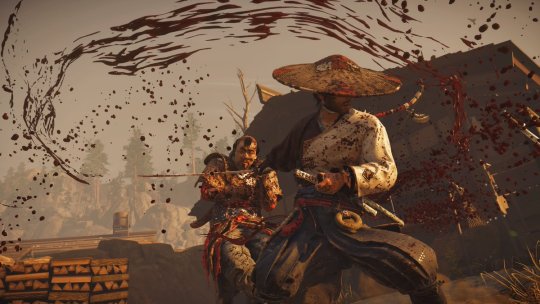
I’m in an interesting position as I write this. Since I’ve written here I have moved out of journalism and towards the dev side of games. Good news! I’m happier! Bad news! It can feel weird to have public opinions. That said, I miss writing and I’ve had some thoughts about games I’ve played (mostly major titles) that I want to share. I’m keeping them loose and I hope folks will allow me the indulgence. Here we are!
Ghost of Tsushima
I’ve been surprised by how playable Ghost of Tsushima is. Which is to say that the world is very enjoyable to explore. There’s something about ambling between marker to marker, or stumbling upon a few hidden items, that fundamentally works. I’ve seen some folks imply that this is simply the result of overproduced open-world design philosophies. A sort of focus-tested gaming drug-world that it’s easy to slide into. There’s probably some truth to that, and there’s a discussion to be had about the dangers of pastoralism, but I think that the open-world itself is designed well. Sure, there’s collectables and outposts to conquer and all the things you would expect but those are not the appeal. In fact, in many cases, engaging with those things feels worse than wandering. In the early game particularly, combat is not enjoyable. But there’s a sensibility to the world, a sort of stubborn antiquatedness that calls back to an open-world structure—one where space existed for its own sake—that we don’t see in as many games now. That’s curious to me because Tsushima has been criticized for feeling old-fashioned but I think this approach to world design isn’t so far removed from Breath of the Wild. It is certain littered with more *stuff* that you can stumble on but despite the fact that I can set markers or unlock bonuses that make these things easier to find, I don’t feel an overwhelming push to engage with them.
That good because combat is a decidedly mixed affair. I’m not eager to slide into difficulty discussions but if Tsushima’s closest cousin is Assassin’s Creed, it’s no surprise that I’ve instantly found the game more playable at a lower difficulty setting. If the goal is to emulate film—and there can be discussion about how well that’s actually done; black and white filters don’t suffice to make something comparable to Kurosawa—then Tsushima’s normally cluttered and gamey combat rubs against that impulse. It’s a game with sub-weapons, ninja-like tools, multiple stances for breaking the guards of certain enemies, and a wealth of skill trees. The beauty of the action (which you can frame at the push of a button thanks to a respectable photo mode) can get lost in the shuffle. Lowering the difficulty has led to speedier and more dramatic encounters where a few sword strokes can slay a handful of men. It’s a curious thing, as I tend to play games on higher difficulties, but this is one of the few times where I felt it might have served a game better to streamline combat down to the most basic of interactions. Tsushima’s combat can get very busy and I did not enjoy tackling challenges or outpost conquest until I progressed to unlock more abilities while also lowering the difficulty. Even then, those are the moments I care for the least.
I feel unable to comment on critical discussions about Tsushima’s story and politics but as an observer to the input of Japanese-American writers and Japanese devs/players, one thing that’s struck me is how the broader gamer culture has reacted to the dialogue. There have been moments where gamers have minimized the voices of some critics with the exultations of certain Japanese writers, which eliminates valid concerns from people who have every right to look close at a game connected to their heritage. The lens through which Tsushima was made was at the end of the day a Western one and that’s worth discussing. I am grateful for the writing of critics like Kazuma Hashimoto at Polygon that dig into these tensions. I will say that I feel like Tsushima sometimes wants to do the proper thematic thing where it will say that entrenched nobility and cultural notions of honor can be inherently damaging but because that’s mostly expressed, at least in the main plot, as “the outside invaders are besting us because of our traditions” it falls flat. Tsushima works best in side quests where the stakes are smaller. It’s thematic aspirations are best when things are personal and on a more humble scale. I like the version of Tsushima I get to play in those moments more than I like the grand gestures towards honor or combat challenges. Which is to say I mostly want Way of the Samurai with multiple zones and a more connective tissue. Tsushima teases that possibility without ever really getting there. In those teasing moment, the game makes a lot more sense to me.
I’ve enjoyed myself and intend to finish soon. That enjoyment comes with a lingering question: what other game could this have been? It’s inspired an image in my mind of a different sort of open-world ronin game where there is a smatter of villages with sub-stories and perhaps the smallest A-plot. A game with Mongol invaders, dramatic family conflict, or shogunate decrees. Tsushima has capture my attention but I do wonder more about what might have been that what is right in front of my eyes.
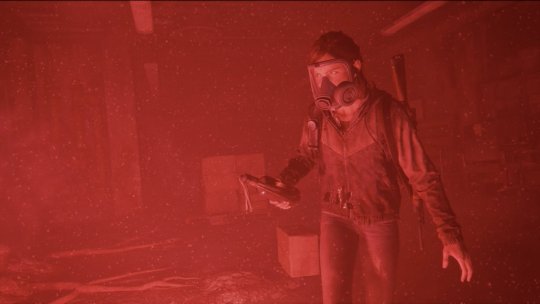
The Last of Us: Part II
I have struggled with this game in ways I did not know were possible. When I play it, I find myself taken in by the raw skill of the actors. There’s a mood and tone I enjoy, a somber twinge to the infected escapades that lingers from the first game. I like The Last of Us. I think there’s small moments of character interaction that express core things about the cast’s shifting relationships. James Howell embarked on a video essay series about this very thing and while it will remain unfinished perhaps forever, I suggest engaging with it. Suffice it to say, the changing language of Joel and Ellie’s mechanical interactions does a lot to underscore the narrative. I think players often think of the The Last of Us in terms of pure narrative but these smaller considerations reveal a game with a very natural approach to story telling. The Last of Us 2 has these moments and often hides them within combat. When multiple factions of humans and infected interact, their clash and the behavior of the AI tells something fundamental about the game world.
The Last of Us: Part II is a cynical game with an unflattering view of humanity, a view that (in spite of Joel’s selfishness in the first game’s climax) feels somewhat at odds with what came before. It is, in fact, possibly the most cynical game I’ve ever played. That’s hard to talk about but it’s best expressed in the various dying barks of enemies or moments where the player is forced into violent, dehumanizing slaughter. In the former case, it feels like a magic trick. The first time you hear someone cry out their dog’s name, it can be tragic. The next five times you hear it, it feels forced. Like any trick, it’s never as powerful as the first time. You might argue that’s the point: that as you follow Ellie’s journey, the player also stripes enemies of their humanity and agency but the player’s culpability is secondary to the writer’s in some ways.
Players did not contrive to have Ellie rob Nora, one of the game’s major black characters, of her fundamental dignity before murdering her. Nor are players the ones who shove a knife into Mel’s pregnant stomach. Those are scenarios crafted by designers and writers, and much like how retroactively guilting the player for killing a doctor in the first game (An unavoidable action, mind you! Joel will do this regardless of what the player wants.) feels manipulative, calling a player’s culpability into question as Ellie fails to act like any sort of reasonable human being also rings hollow. There is a perpetual push and pull between players and controllable actors, best expressed in the verbs that we are allowed to perform. It is telling the more often than not, Ellie’s most egregious acts of violence happen outside of the player’s control.
And yet there are moments where I buy deeply into the story. Notably, it happens when Abby is on screen more than Ellie. (Tangent: Abby has more interesting gameplay scenarios that lean closer to horror game vibes like what you’d find in The Evil Within. TLOU is way more interesting working in that mode than HUMAN vs. HUMAN drama.) Abby is also allowed more growth and agency than the script ever gives Ellie. At the core of this is Abby’s relationship with Lev. It is here that I’ve had my largest struggle with the game.
Discussion about Lev has often bowled over transgender commentators. For many people, Lev resonates regardless of anything the plot says about his gender. Lev captures people’s attention because Lev is eminently likable. That’s a testament to Naughty Dog’s writing. Still, there is a sense that Lev’s wider resonance has left some folks (particularly queer folks) without as much space to talk among themselves and hash out sentiments without the discussion getting overpowered. This is complicated by an environment where creators seem more empowered to directly speak to criticisms.
Which is to say that as a trans critic (perhaps ex-critic) watching from the sidelines, I was very hurt and dismayed to watch people who do not share in the transgender experience comment quickly about Lev. And while the discussions about Lev are varied—the trans community, like any community, is not a monolith—it’s sometimes felt like trans voices were made the quietest when talking about this character.
Many things are true about art at the same time. Lev can act, as is the case for some players, as a token figure whose struggles are appropriated and turned into spice adding flavor to the apocalypse. Spice that allows us to be seen as we are usually seen: in pain and defined by that pain, and which displays that pain voyueristically for cis players. Lev can also be a kind-hearted and respectable hero, and ray of light within a dark story. Neither feeling is in competition. Some will find strength and inspiration in the character, others will see the machinations of corporate powers and award-chasing writers. Both can be true.
Enthusiastic fans and players are quick—not in a malicious sense; merely in their excitement—to defend the things they enjoy. If they found a thing good it stands to reason the thing must be good. They empathized and that is taken as proof that a thing is good irrespective of other concerns. This is a kind impulse but one that robs people of their concerns, or at the very least close off conversations quickly. I cannot properly diagnose this except to suggest that there’s a growing force of cultural positivism that’s encircled games of a certain scale. One which shuts down a lot of valuable engagement. The bigness of the moment, of the object, demands the moment be the Best Possible Moment For Games regardless of the qualities of the object itself. That’s worrisome to me.
The Last of Us: Part II has become nearly impossible to talk about even now because we are dealing with an object so large as to have a gravity that weighs everything down. A game with sublime moments that intoxicate deeply but one where voices of critique or caution are buried away largely because of the potency of that intoxication. I deeply wish that wasn’t the case because the breadth of discussions that might’ve happened would have been really valuable.
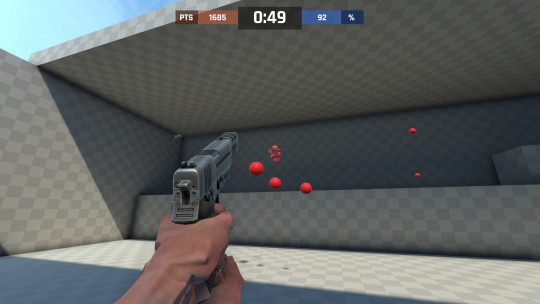
Aim Lab
I’ve gotten really into Valorant. It’s scratched an itch for a type of multiplayer shooter that I haven’t had scratched in a long time. My experience with the game itself has been good but the surrounding experience has been decidedly mixed. Suffice it to say I’m mostly living the solo-queue life and it’s a miserable existence even with the occasional highs. Yet, there’s a mechanical crunchiness to Valorant that deeply compels me and I’ve enough competitive drive that (in spite of the fact that the most of beloved social aspects of the game seem generally out of reach for me) I’ve really devoted myself to improving as player. Enter Aim Lab. It’s a totally free aim trainer that anyone can download off Steam. It has a variety of drills and exercises that can be used to improve a variety of first-person shooter skills. In one case, you might be flicking from target to target with the express goal of training your aiming speed. In another you might need to look at a group of colored balls, which will then disappear with one of them changed. You’ll then need to shoot at the different one as quickly as possible. You earn a score for each drill, which is tracked and compared to global records and folded into a ranking system. I’ve placed in the “Ruby” range for my rank, which is mostly in the middle of the road. (It’s a weird rank above gold but I think before Plat?) Mechanically sound with sloppy spots. I’m able to identify these thanks to Aim Labs. For instance, I know that I am fast and relatively accurate but that tracking moving targets is a difficulty for me. I know that I am quicker at things on the right side of my screen but also that I’m thankfully able to read changes in the environment quickly. This might sounds like a dry and rote way to approach video games but Aim Labs’ suite of repeatable and trackable challenges means that it is very easy to trace gradual improvements.
As a result, what might have been dull work becomes something akin to going to the gym. I can feel the ways in which my control over a mouse have changed. I understand which muscles need more flexing. Importantly, for all my weakness I also know strengths. Playing Aim Labs—and yes, this is play—becomes a semi-automatic and meditative experience like swinging at a batting cage.
As a player (again, I hesitate to use the word critic anymore) who tends to engage with games on thematic levels even when it comes to mechanics, it’s been surprisingly gratifying. Part personal ritual, part labor. Bubblegum for the brain. Chew chew chew. Shoot shoot shoot. Take some notes and chew some more. Not much more to say except Aim Labs has surprised me with how enjoyable and relaxing it can be.
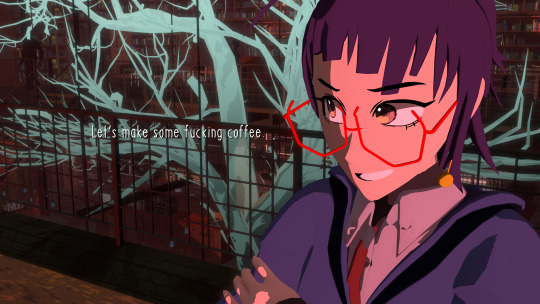
Necrobarista
Necrobarista was not what I expected. That’s because I started playing it with what felt like a safe-assumption: it would be comparable to some of my favorite indie “drink” games like Va-11 Hall-A or Coffee Talk. It’s hard for me to break down those games and how their structure—insightful conversations punctuated by drink-mixing and the occasional memory puzzle or story choice—works for me. I know folks who have played those games and bounced off for entirely understandable reasons but I love them. They call to mind some of the personal experience I had as both someone who worked at a bar and coffee shop. In spite of their fantasy settings, they evoke a highly specific and idiosyncratic part of my brain. Necrobarista doesn’t quite do that because it is strictly a visual novel. Repetitive work such as drink making is entirely absence. As a result, I initially found Necrobarista harder to engage with. It lacked the percussive but comfortable rhythm I was craving in quarantine.
That highly specific preferential quirk/personal need might place the game lower on my list then the other two (the game’s certainly in conversation with them to a degree; it’s got plenty of shout-outs and references that make it clear the designers know the ballpark they’re playing in) but it doesn’t mean it is a “lesser” game in terms of the world it is presenting or the character you’re watching. Necrobarista has, if nothing else, some of the most naturally flowing dialog I’ve experienced in a while. That is partly because I’ve been sampling so much AAA stuff, where the writing tends to eschew the evocative for clean, crisp (and corporate!) staccato, but even in comparison to other VNs or drink games, it finds some more integrated and interesting ways to handle lore dumps. That’s helped by the core conceit. The lead character Maddy Xiāo runs a coffee shop alongside her wise former boss Chay that just so happens to serve drinks to the recent deceased. That makes it really easy to introduce a character, as the plot soon does, fresh off the mortal coil and eager to learn about life after death. It’s a common writer’s trick to place a clueless character in a plot so world-building can happen but because the stakes are high—the freshly-deceased have only 24 hours before they pass into the afterlife—there’s an urgency in the explanations that feels warranted. I could probably spend a lot of time breaking down the ways in which Necrobarista successful builds the world around the player. From a well-framed scenario and properly placed characters (an inquisitive child-genius, for instance) to the ability to click highlighted words for snarky but never crass footnotes, you never want for necessary knowledge but also never feel like your hand is being held. You’re not digging for meaning or piecing together arcane lore concepts. You know what you need to know, it feels fun to learn it, and the characters all make sense. They’re also incredibly likable. Necrobarista’s largest strength isn’t that the details are handled well; it’s that the core cast is deeply relatable. That’s important because the story moves from coffee to magic and death within a clipped 4 hour playtime. Relationships are clear, motivations clearer, and while some of the standout story-telling pieces are in optionally readable side-chapters, the main story lifted up by how eminently fun it is to eavesdrop of these character’s lives. The only glaring exception is a Greek chorus of robots that seem out of place and overly-chatty. Necrobarista sometimes feels eager to impress structurally, and that’s no more clearer than when these fellas are on screen. The difficult thing about Necrobarista’s literary approach is that the pandemic’s completely shot my attention span. It took my two weeks of on and off play to finish what is a very short game. That said, given the enormity of some world events I found it edifying and cathartic to engage with a piece of media explicitly concerned with death and dying. It wasn’t what I thought and I kinda wish it had a bit more happening mechanically but I’m really happy for the time I spent with this one.
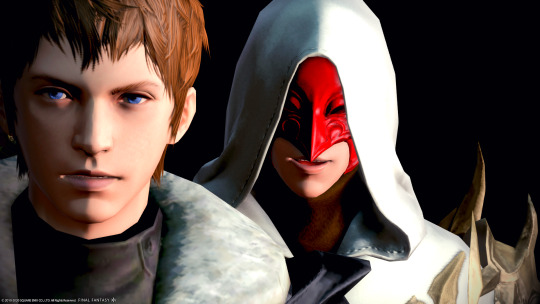
Final Fantasy XIV: Shadowbringers
Shadowbringers and Final Fantasy XIV in general is a difficult thing talk about. Not because of the accumulated history of a long-running game and storyline but because my feelings are ultimately swayed by a host of personal and specific emotions. I am a social player on a social server. I’ve spent just as much time coming up with roleplaying plotline and casually taking in taverns as I have tackling difficult bosses. I have made dear friends through FFXIV and even more than that. Those relationships, their energy and gravity, mixed into everything like an errand paint drop. You can hardly see it in the mixture but it’s unavoidably there. For many, this is a game of heroes and anime plots. For me, it has been a doorway to some of the most fruitful, edifying, and occasional painful experiences of my life. I say this because I want it understood that in spite of this sentiment, Final Fantasy XIV is a good game and Shadowbringers is easily one of the most confident pieces of video-game storytelling that I’ve ever experienced. Which isn’t to say it’s not sometimes trite or predictable. It’s not to suggest there is something groundbreaking here. For all of the craftsmanship, Shadowbringers often succeeds by embracing the conventional. It sticks to more well-worn plot structures, it simplified job gameplay and streamlined a variety of features whose strange and un-sanded bumps brought charm to the game. Yet, in the streamlining comes something more refined. Like running a soup through a fine mesh sieve to create something creamier and more rich. When you look at Shadowbringers high level plot: travel to the corners of the world to fight monsters, all while unraveling cosmic secrets.. it’s familiar. Even as the patches following the launch experience did, as all FFXIV patches do, focus on the fallout of the main story’s event, it kept to a strict content release pattern. If you’re digging for a revolutionary experience, Shadowbringers cannot offer it by virtue of structure. But what has been releases is foundational. The writing is of such quality and battle scenarios increasingly playful that everyone should be taking notes. A core component of Shadowbringers success is how deeply the story is concerned with genuinely exploring the richness of the scenario. It would be easy to craft a story about evil mages destroying the world. FFXIV’s done the more straightforward version of that at launch and it proved stiff. Instead, Shadowbringers’ has a deep concern with motivations and takes unprecedented time to explore the interior of the cast. This allows old characters to grow into bright new versions of themselves, and it has (two for two now!) turned villains into more than just monsters. The writing exhibits a delicious empathy for the world, and it takes time to give everyone a perspective. In MMOs, this is not always afforded. Characters act as quest-barkers and clumsy plot chess pieces. Shadowbringers strength rests in avoiding this in favor of clear stakes both personal and cosmic. There’s plenty to be said for other aspects. Masayoshi Soken’s music remains an incredibly powerful trump card, and the latest patch (which concludes the Shadowbringers story and sets up for next expansion) shows an increased willingness to employ fight mechanics that trick and test players in new ways. The content is challenging and full of tiny subversive moments that actually rob players of power they’ve taken for granted over the course of hundreds of hours. In finding its stride, Final Fantasy XIV doesn’t just craft sweeping narrative moments, it better integrates those stakes into individual boss encounters. There’s a cohesiveness, an interlocking of parts where each piece (music, narrative, gameplay, et all) are in clear conversation with the other and often in conversation with not only other expansions but other games within the franchise.
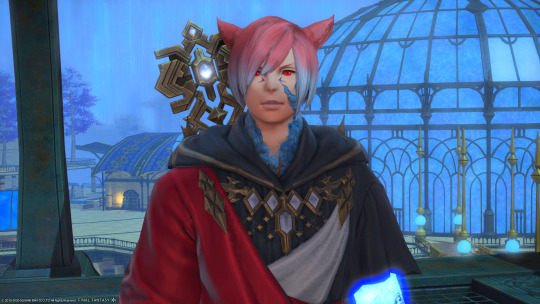
Recently, a piece dropped on Polygon with the title “Games need to return to black-and-white morality.” It was, if I can be honest, a poor title for the article and one which left a freelancer unduly exposed to harsh feedback. But there is a core kernel to the article. To quote the writer: “Watching our heroes stick to their convictions, even against insurmountable odds, ratchets up drama, rather than destroying it. The concept that good can ultimately triumph over evil is a timeless one, and stories that rally around this trope — around unadulterated hope — can help guide us through the year’s ceaseless onslaught of calamities.“ Shadowbringers’s conclusion brought this piece of writing to mind. I’m ironing pretty much all of that piece’s argumentation but the notion that games about heroes have great efficacy in times of uncertainty shouldn’t be a controversial one. The crux of my favorite game, Skies of Arcadia, is that heroism is hardly a choice at all. It is a compulsion, it is a duty that we all must accept when the moment comes. Shadowbringers is not quite as simple but it is ultimately a story about hero defeating the baddies, and I would be lying deeply to say that there wasn’t something incredibly, nearly word-defyingly beautiful about the feeling of hope I felt in its concluding moments. The sweeping power of epic fantasy and heroism holds true and, like a genuine panacea, held a curative power for my soul that was not just enjoyable once consumed but frankly necessary for my well-being. I’ve no clean conclusion here (and I don’t have to! ha!) other than to say that Shadowbringers has consistently proven a delight in a sea of rocky games media. It is affirming, exciting, and empathetic in ways that I was not expecting. That, along with the friendships I’ve made while playing, have secured its place as one of my favorite video game experiences ever. From start to finish, it really was a delight.
------------------ And that’s that! I was gonna write about Blaseball but I need to let my Blaseball feelings settle before even trying that. Anyway, if you read this.. uh thanks!
#FFXIV#Final Fantasy XIV#Shadowbringers#The Last of Us Part II#Necrobarista#Ghost of Tsushima#aim lab
16 notes
·
View notes